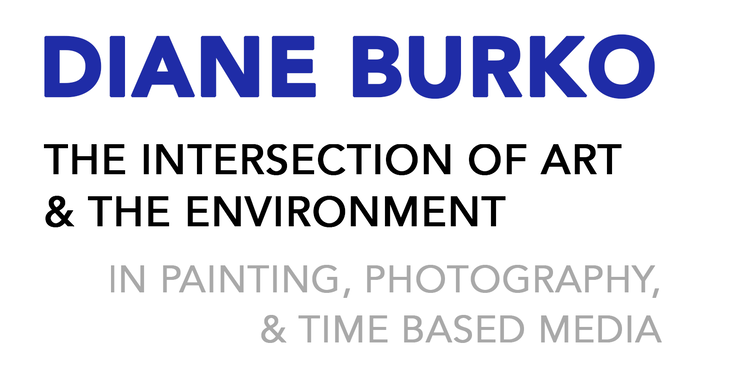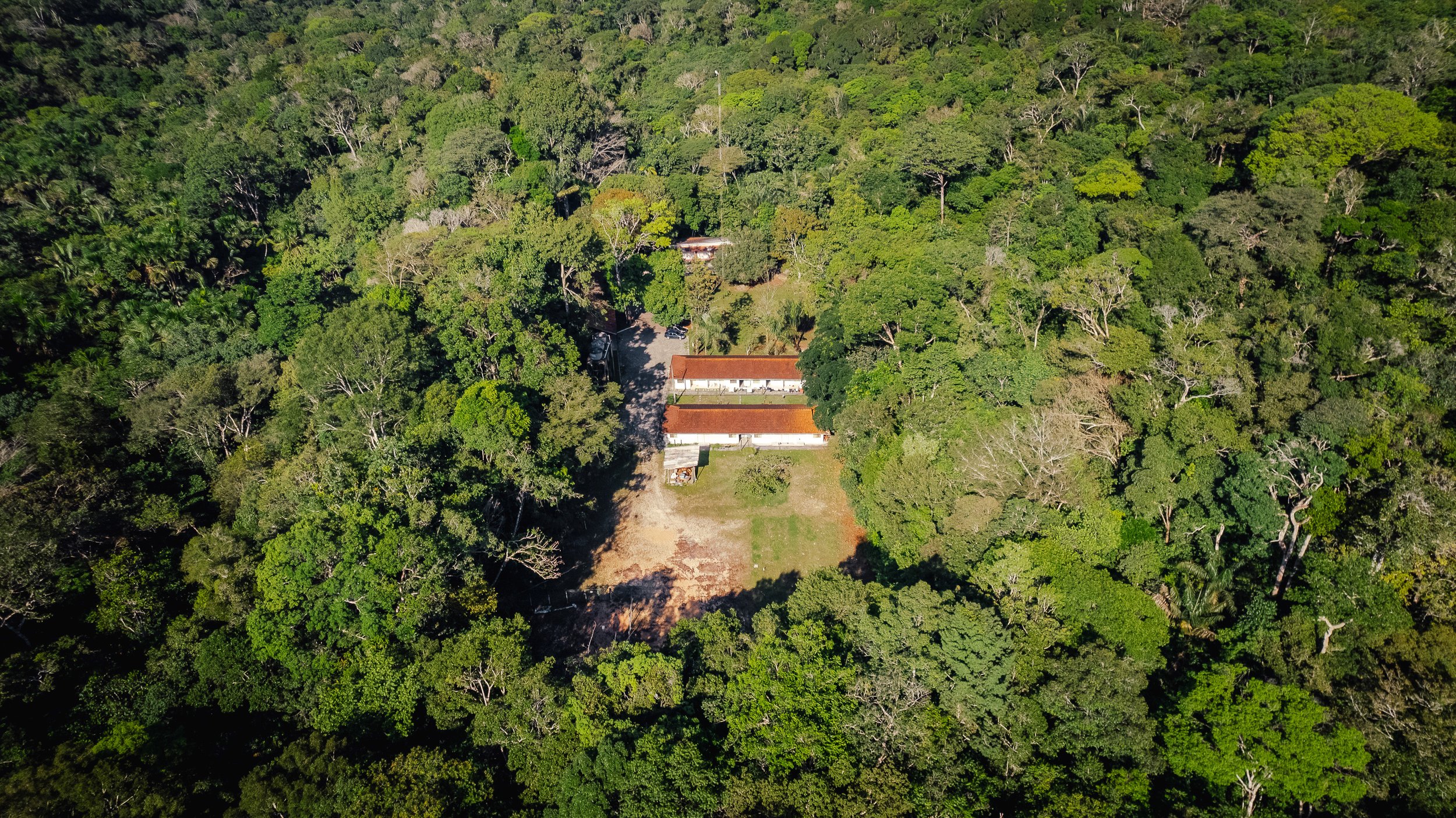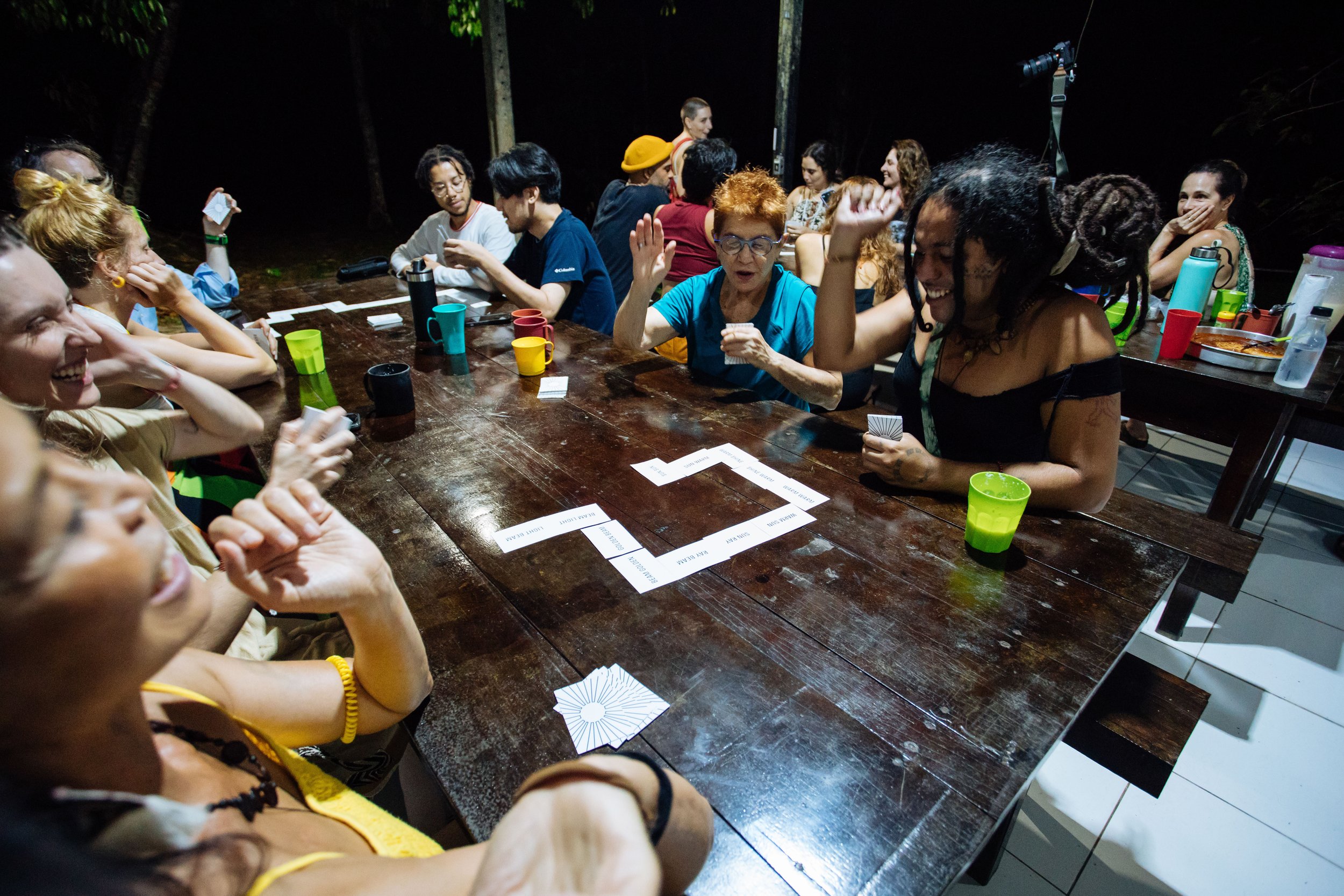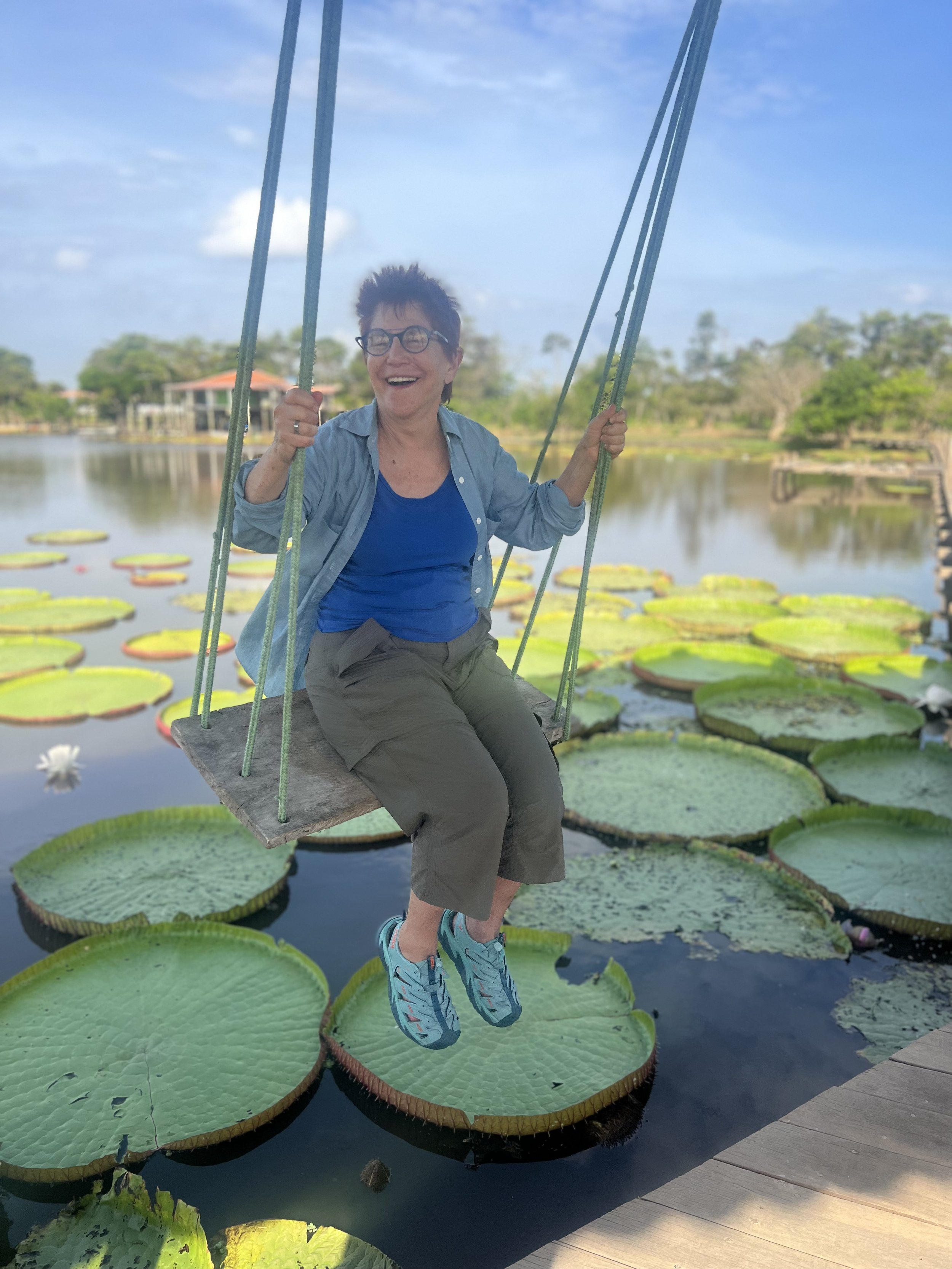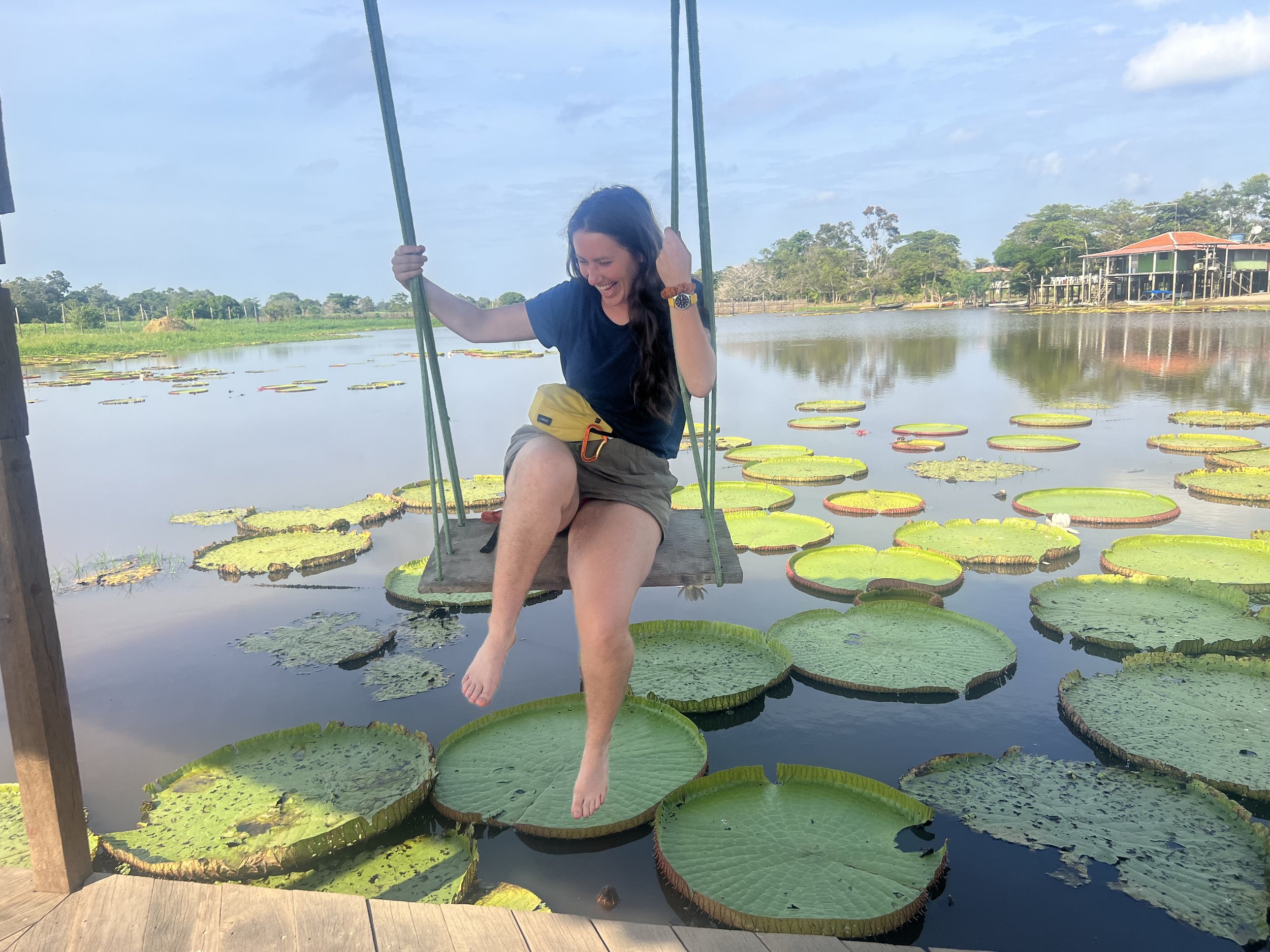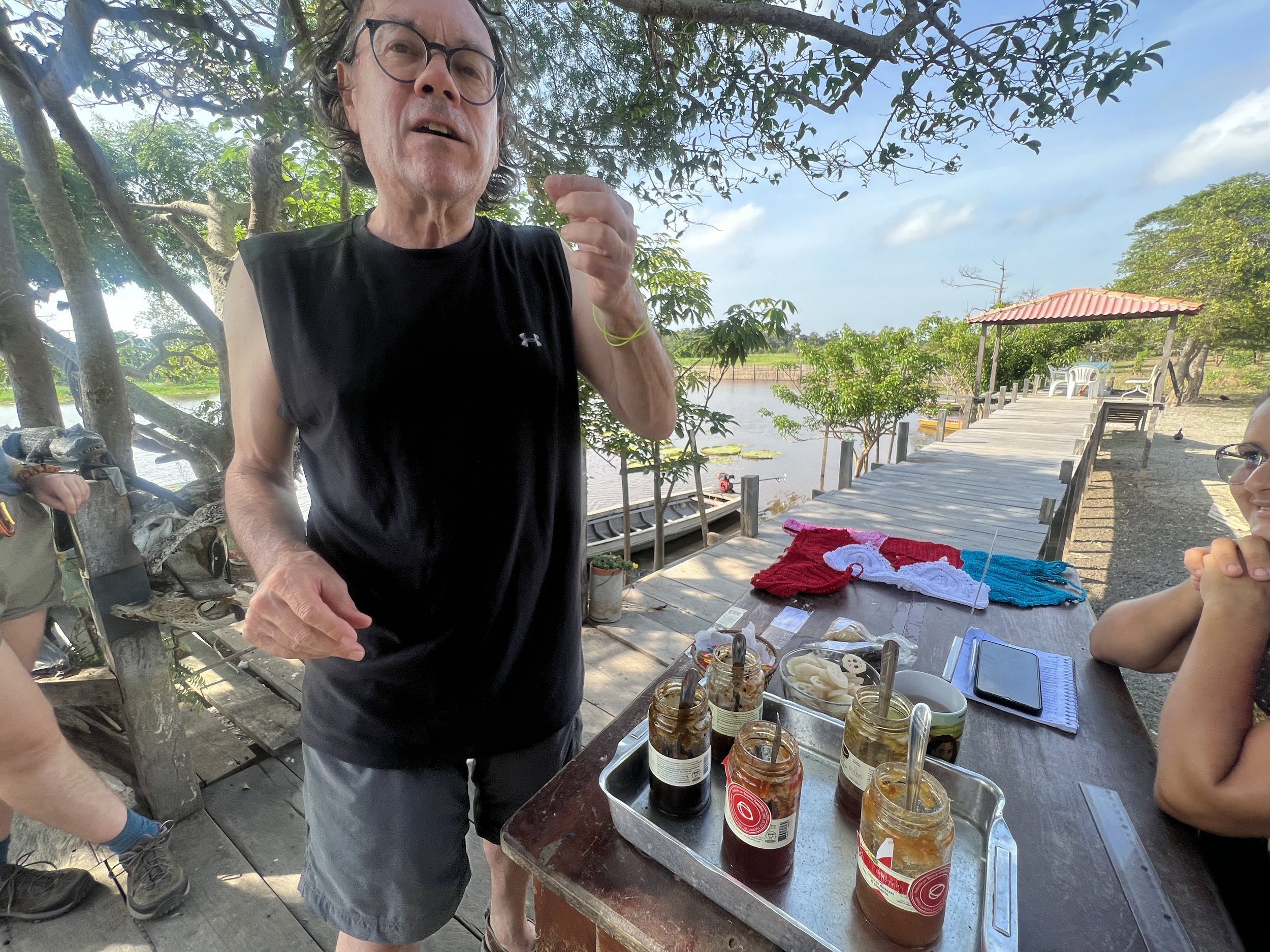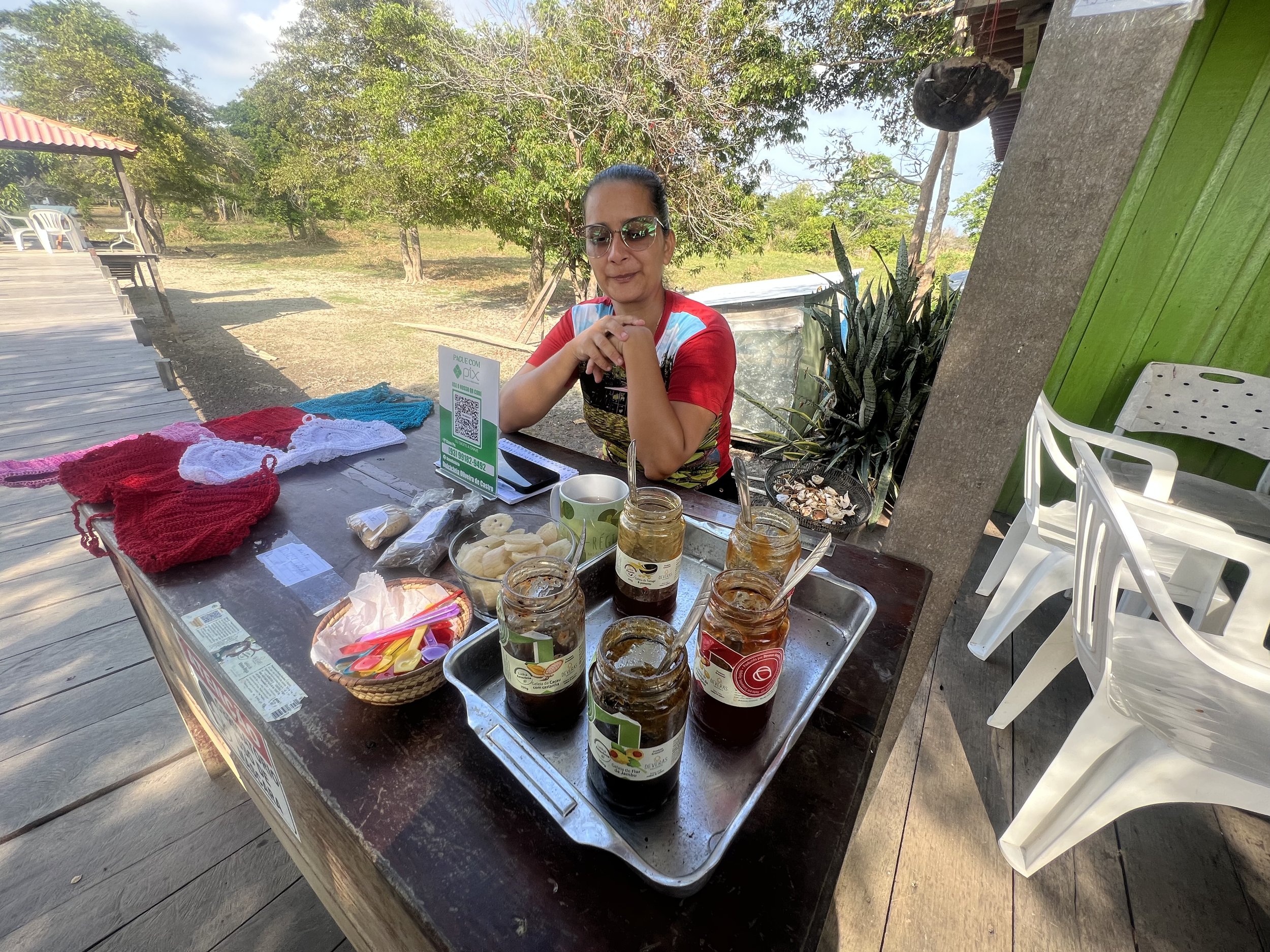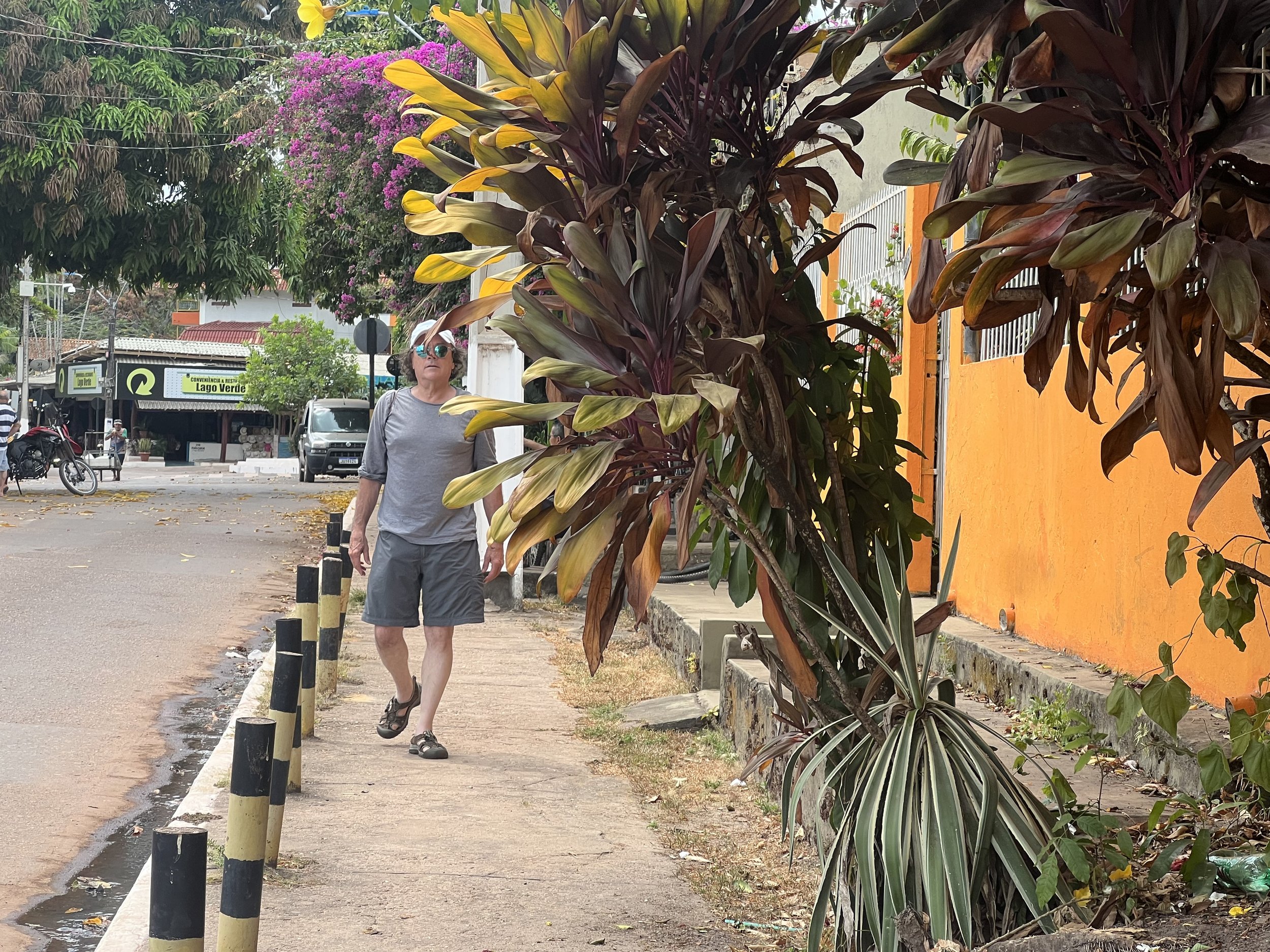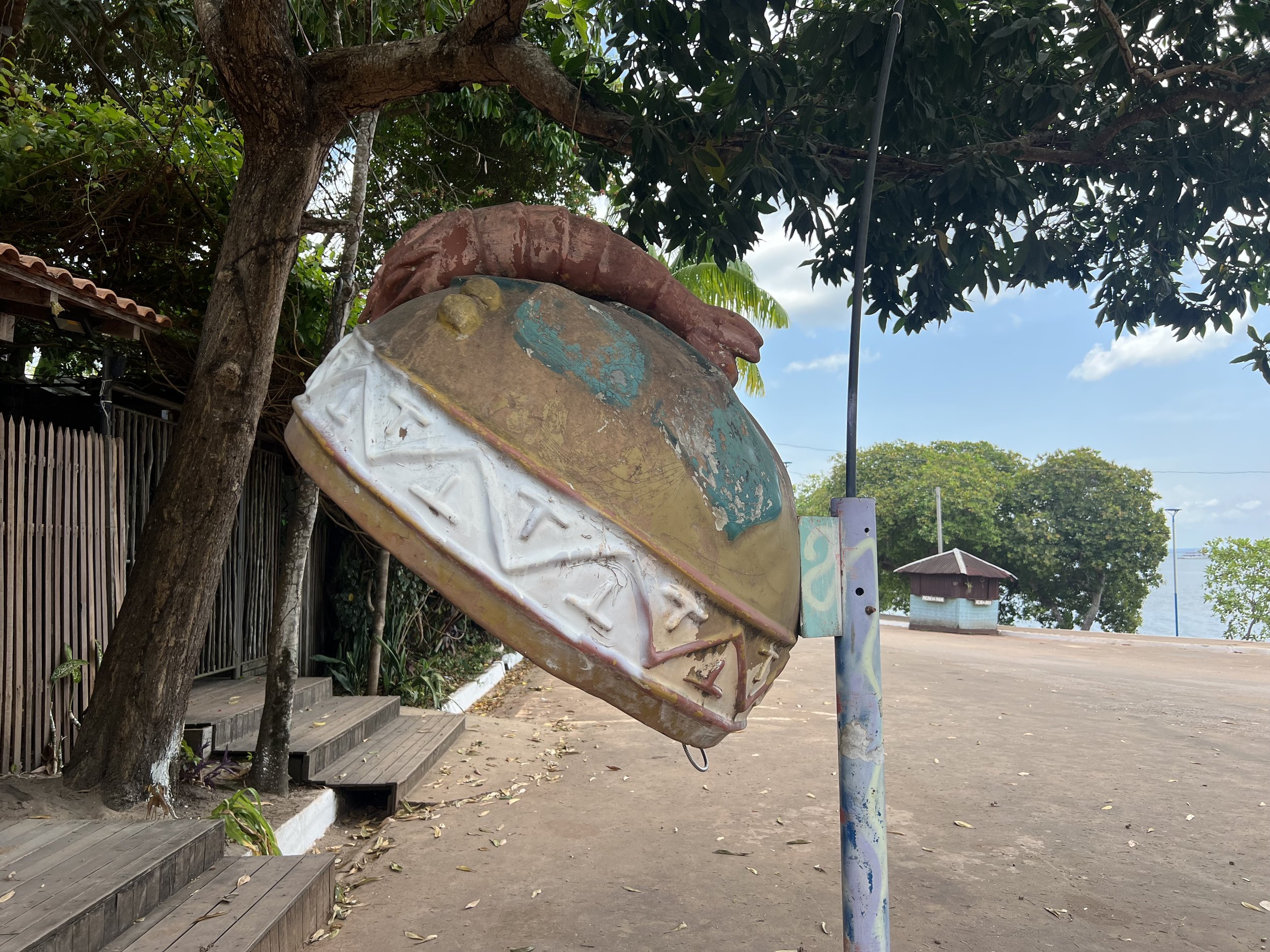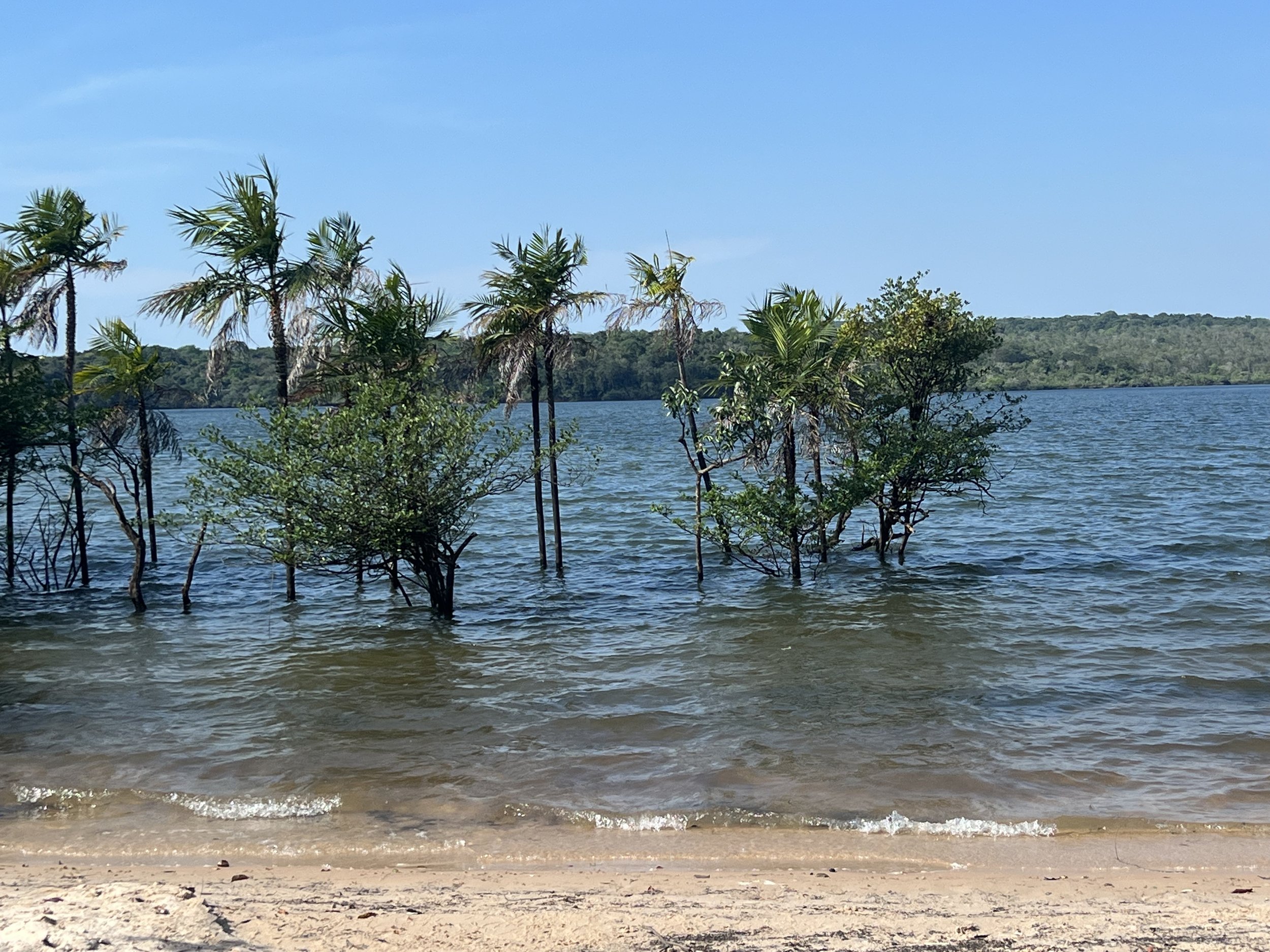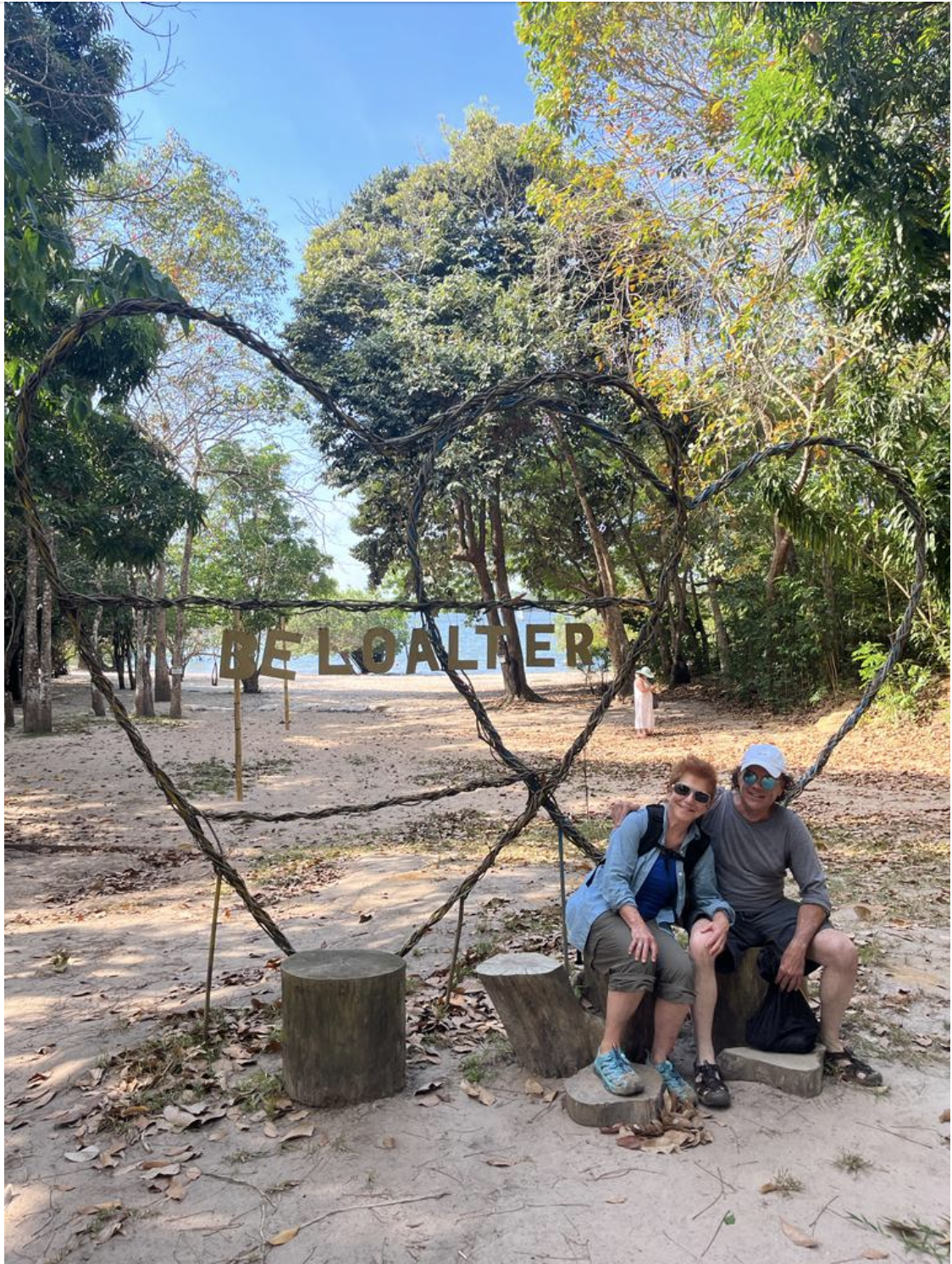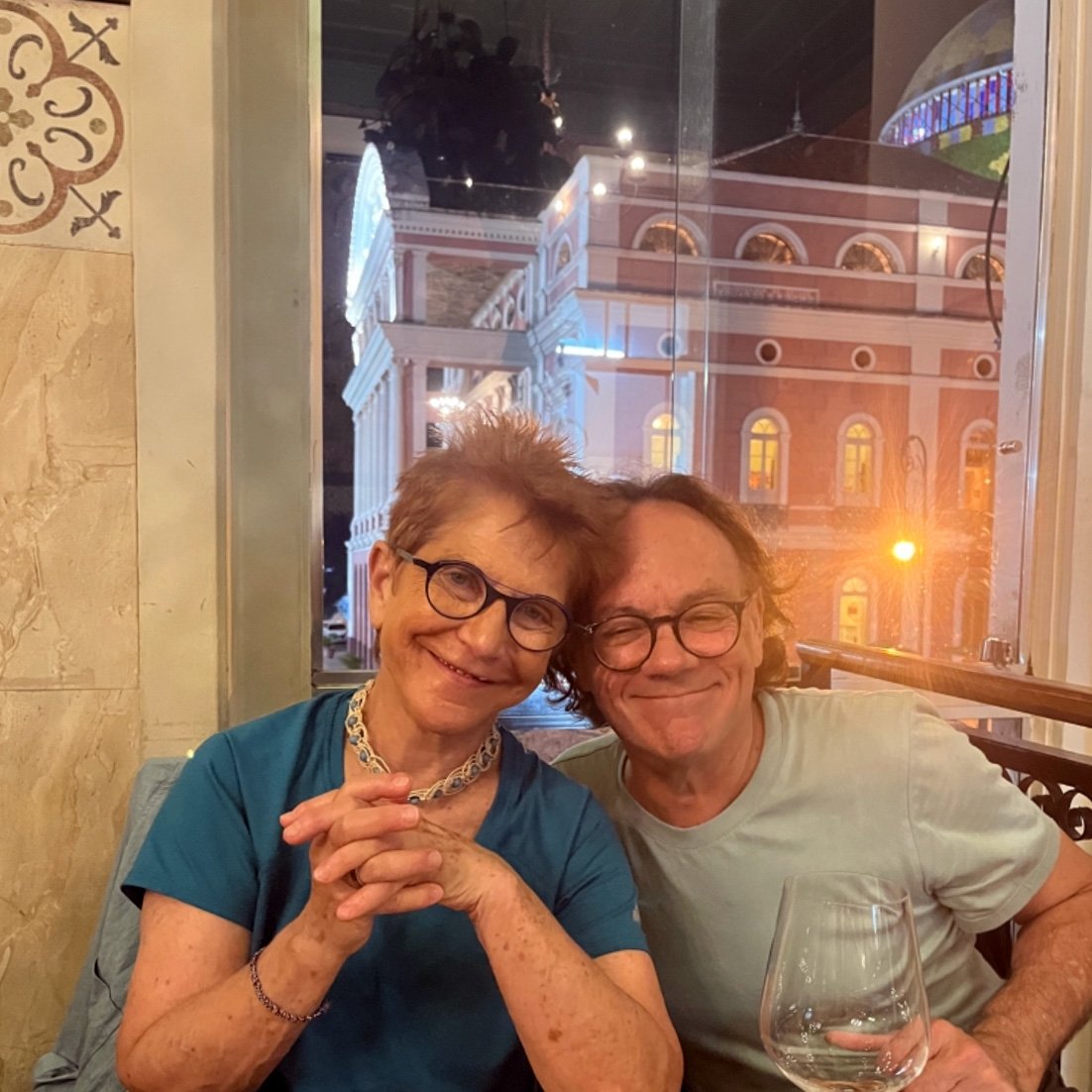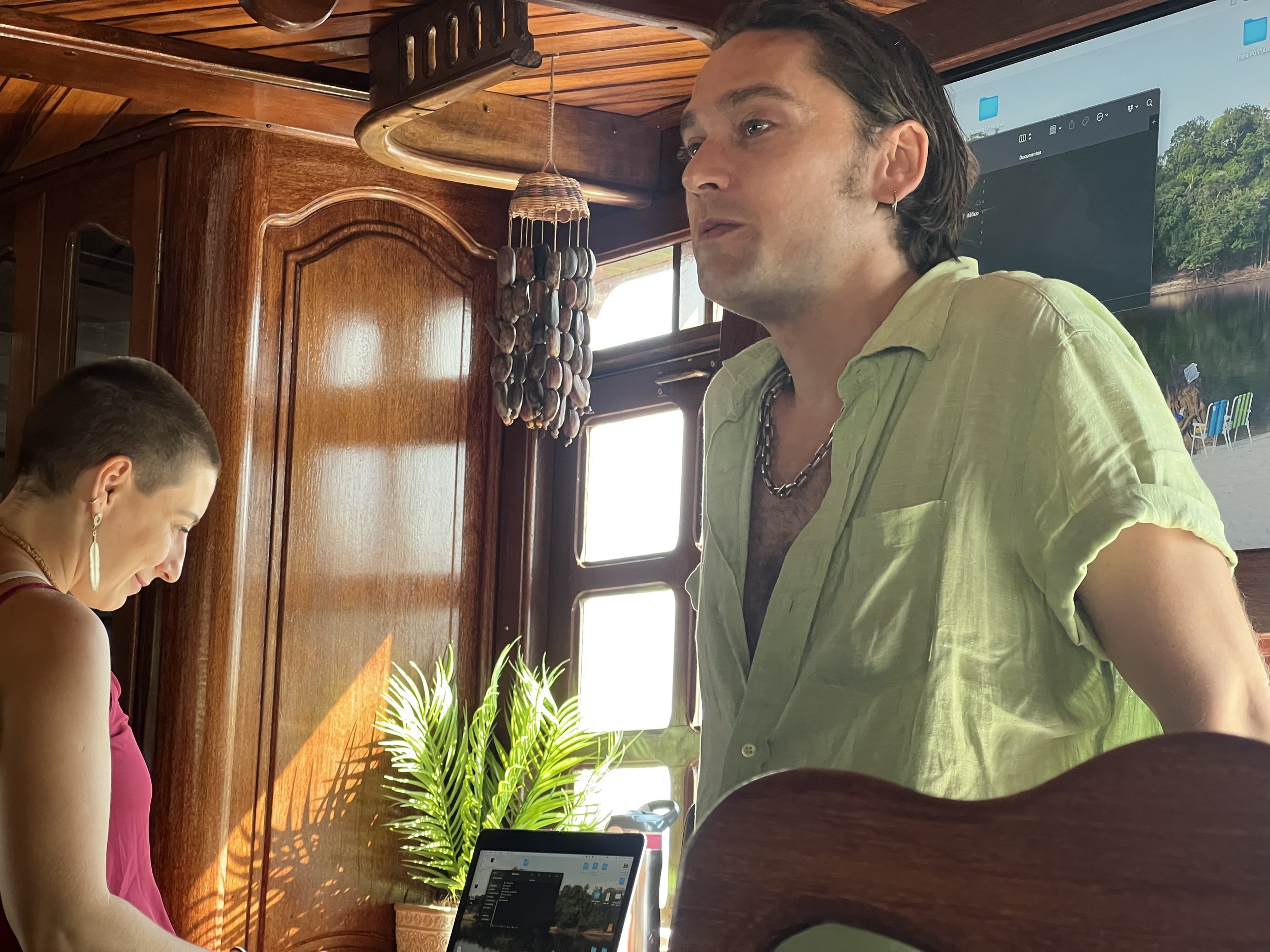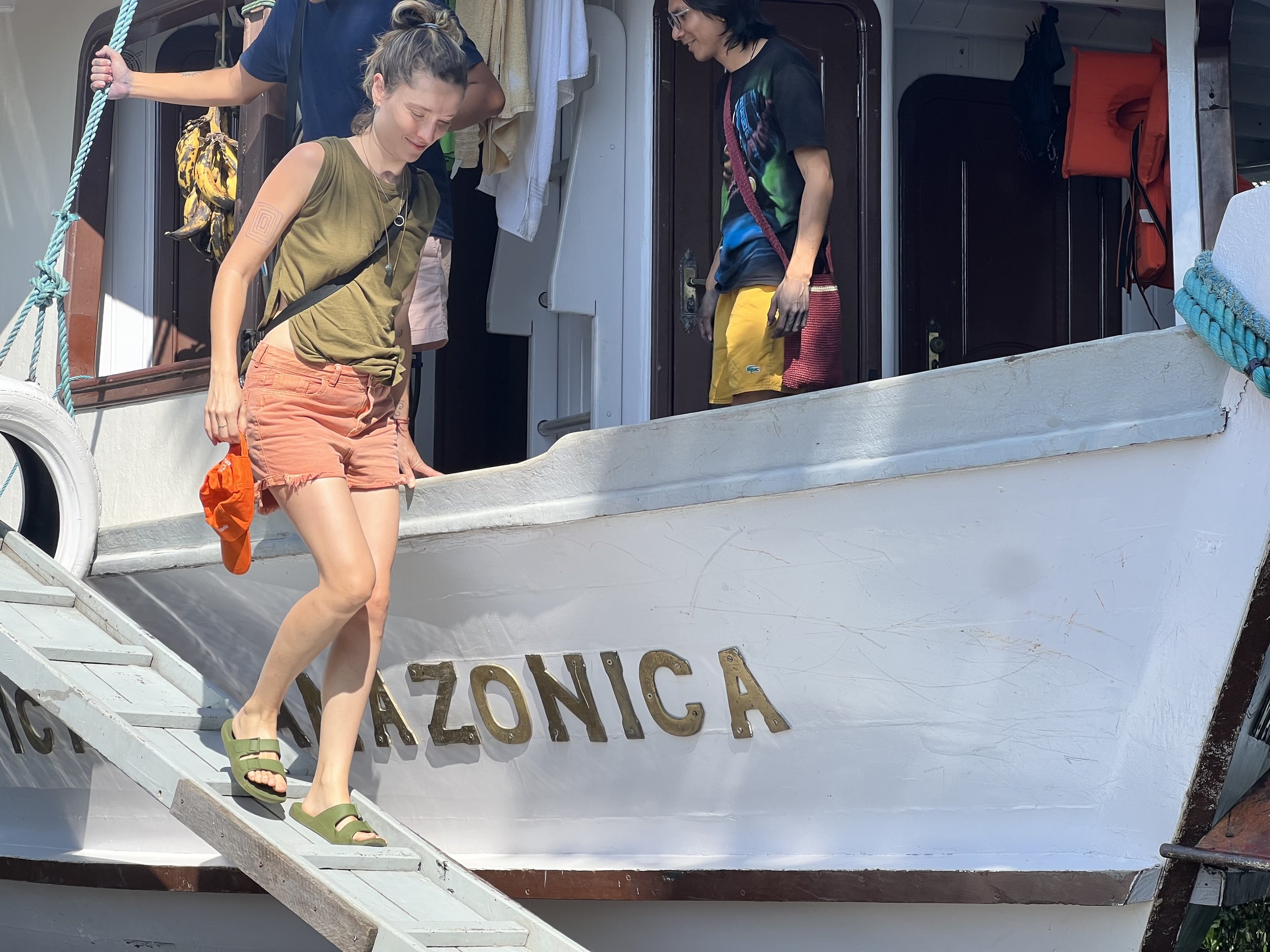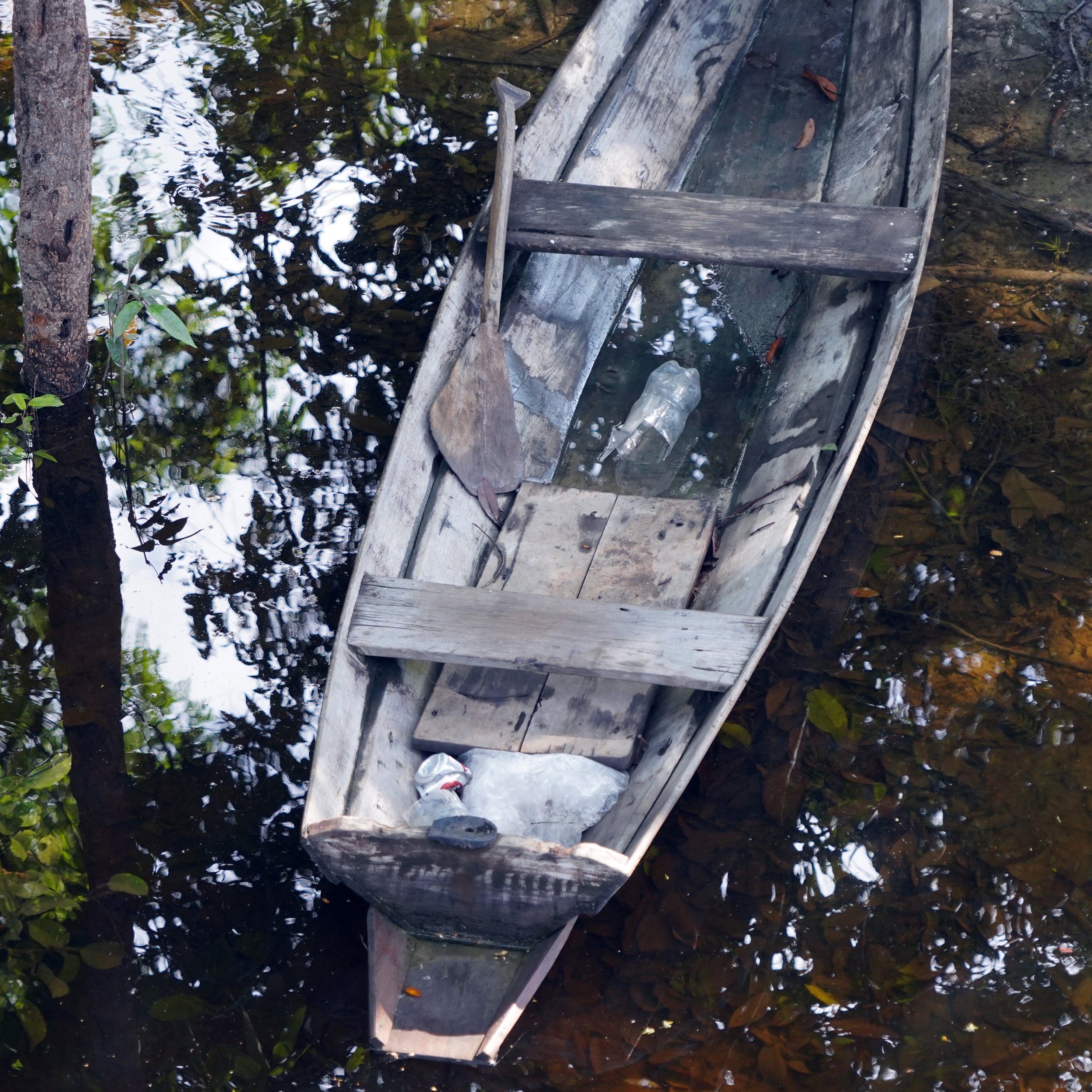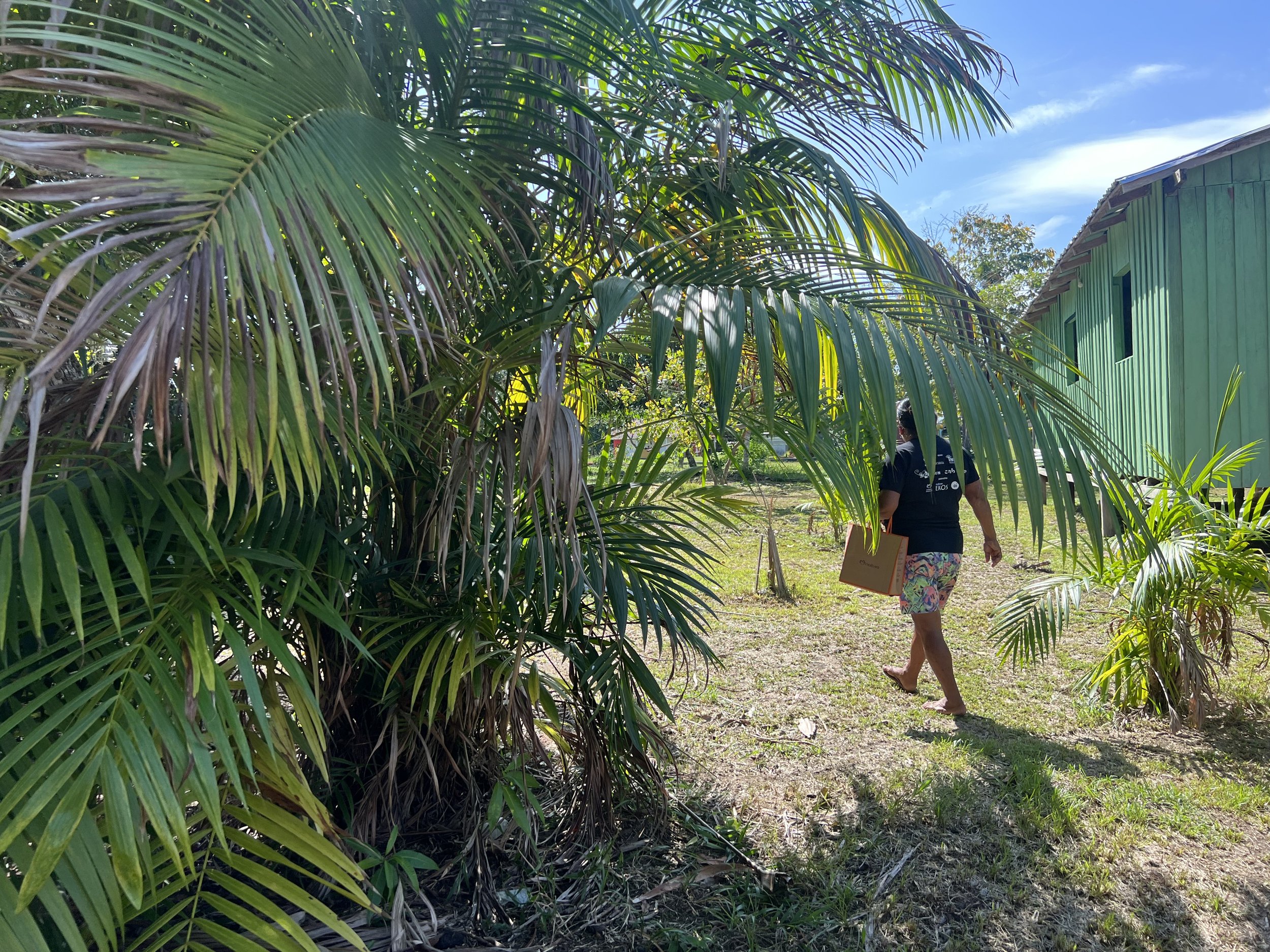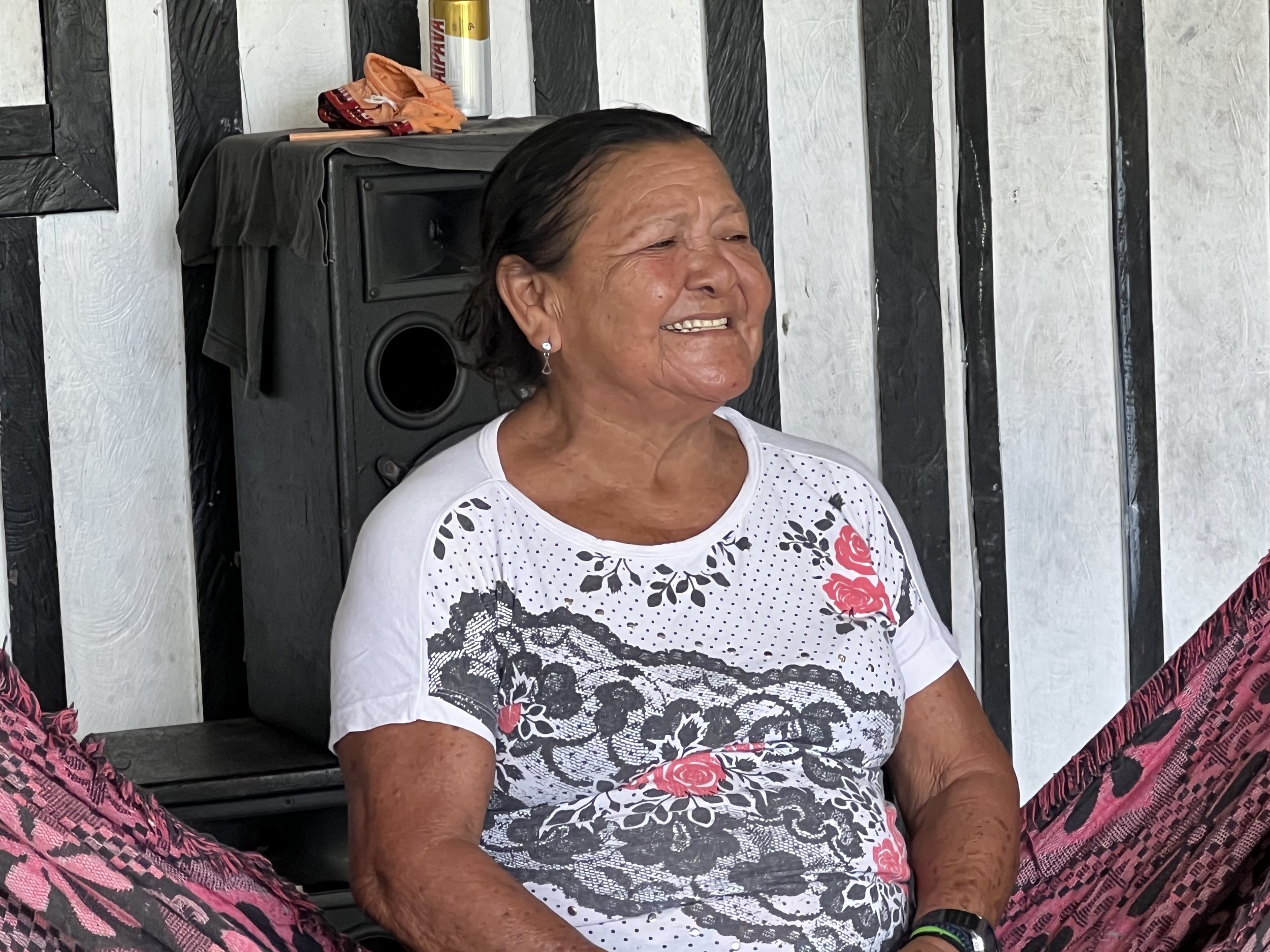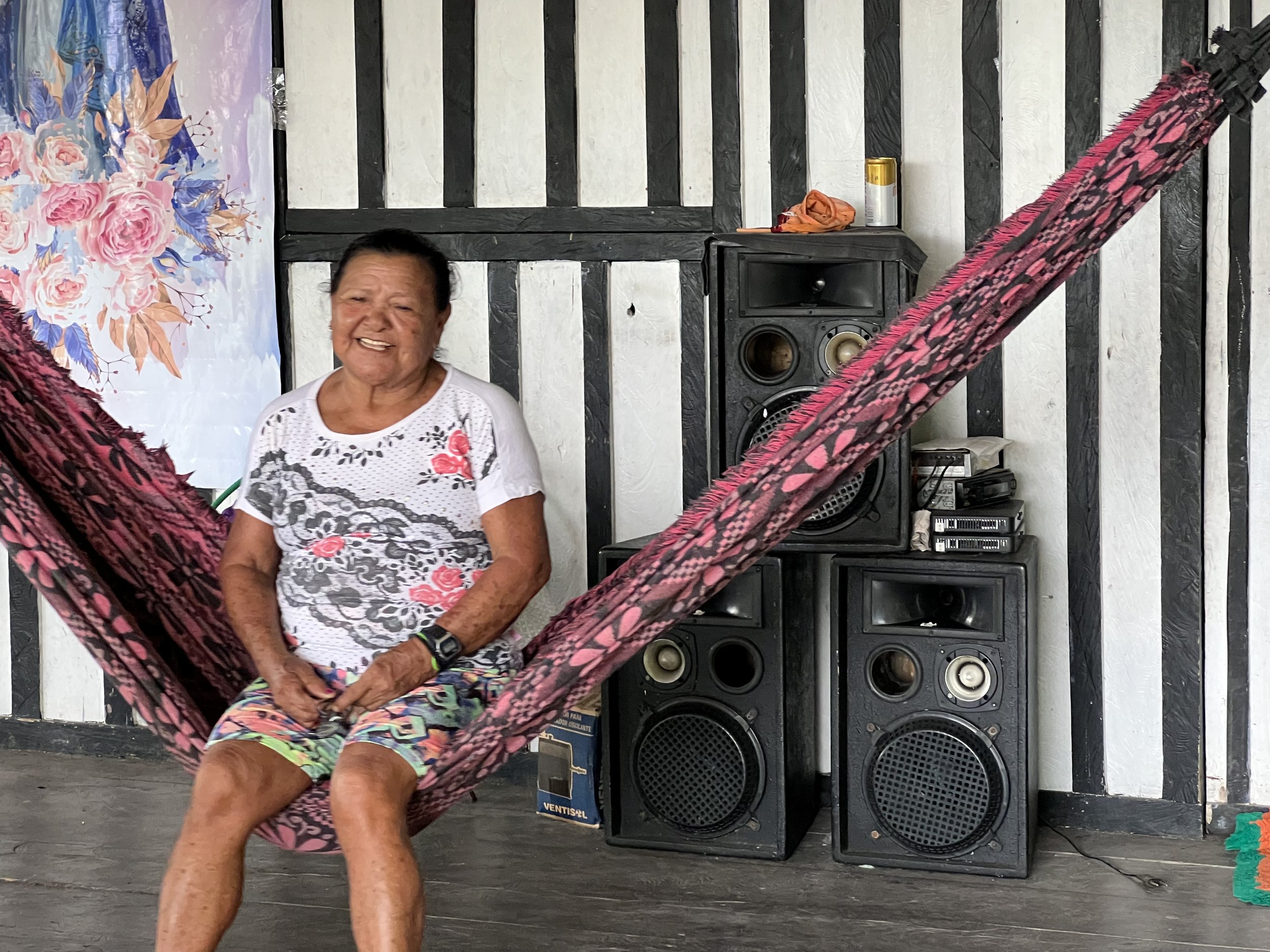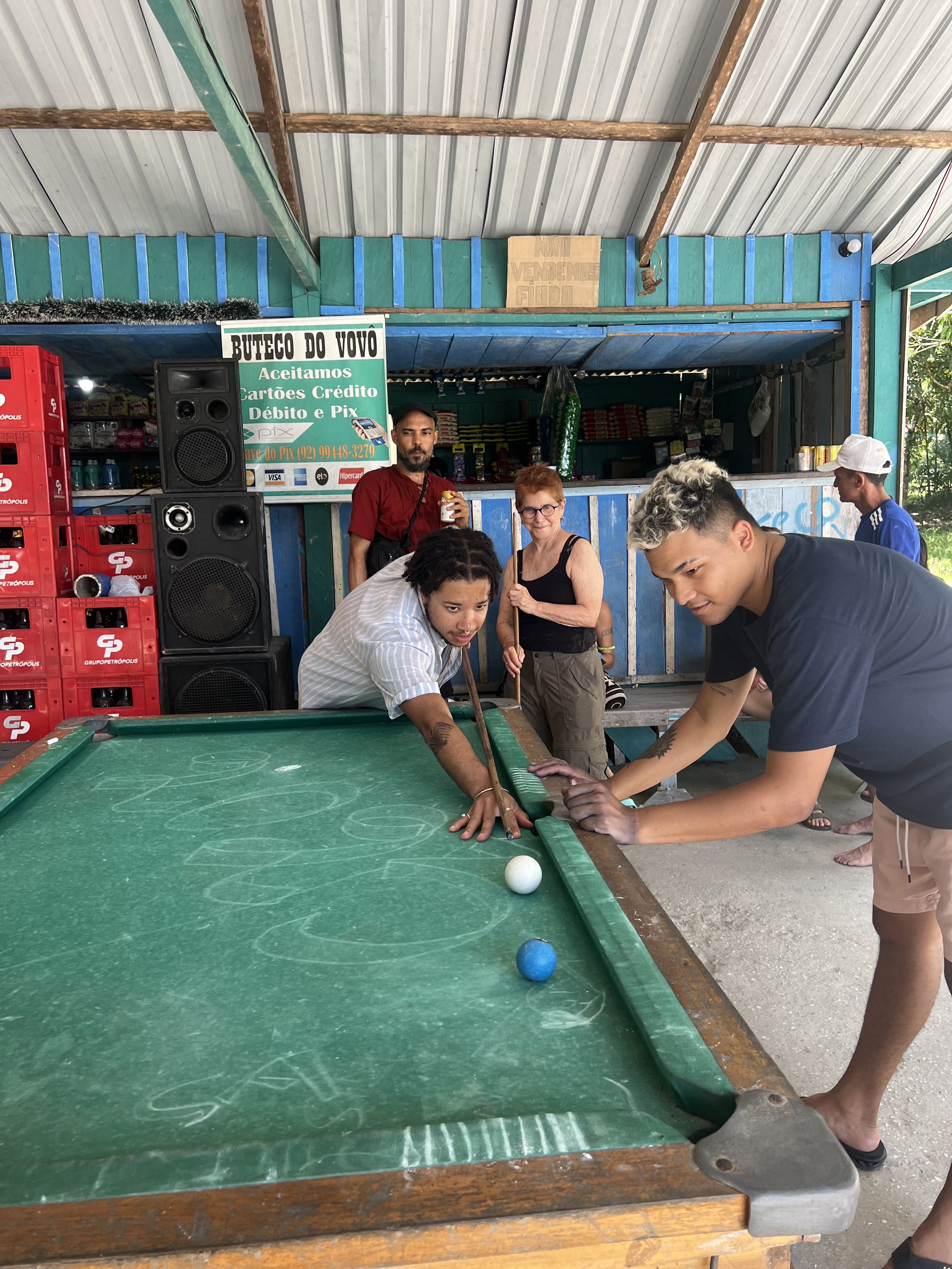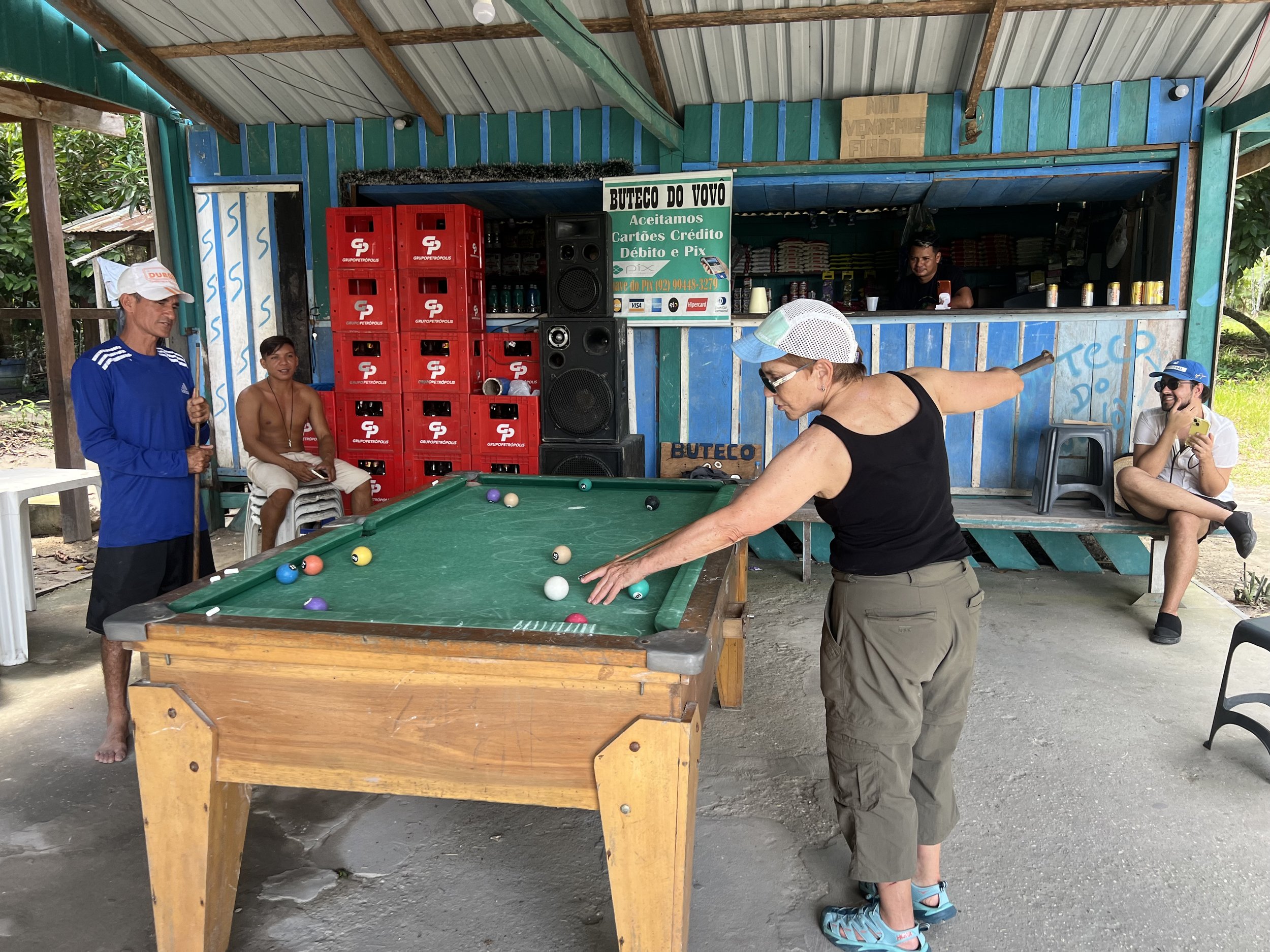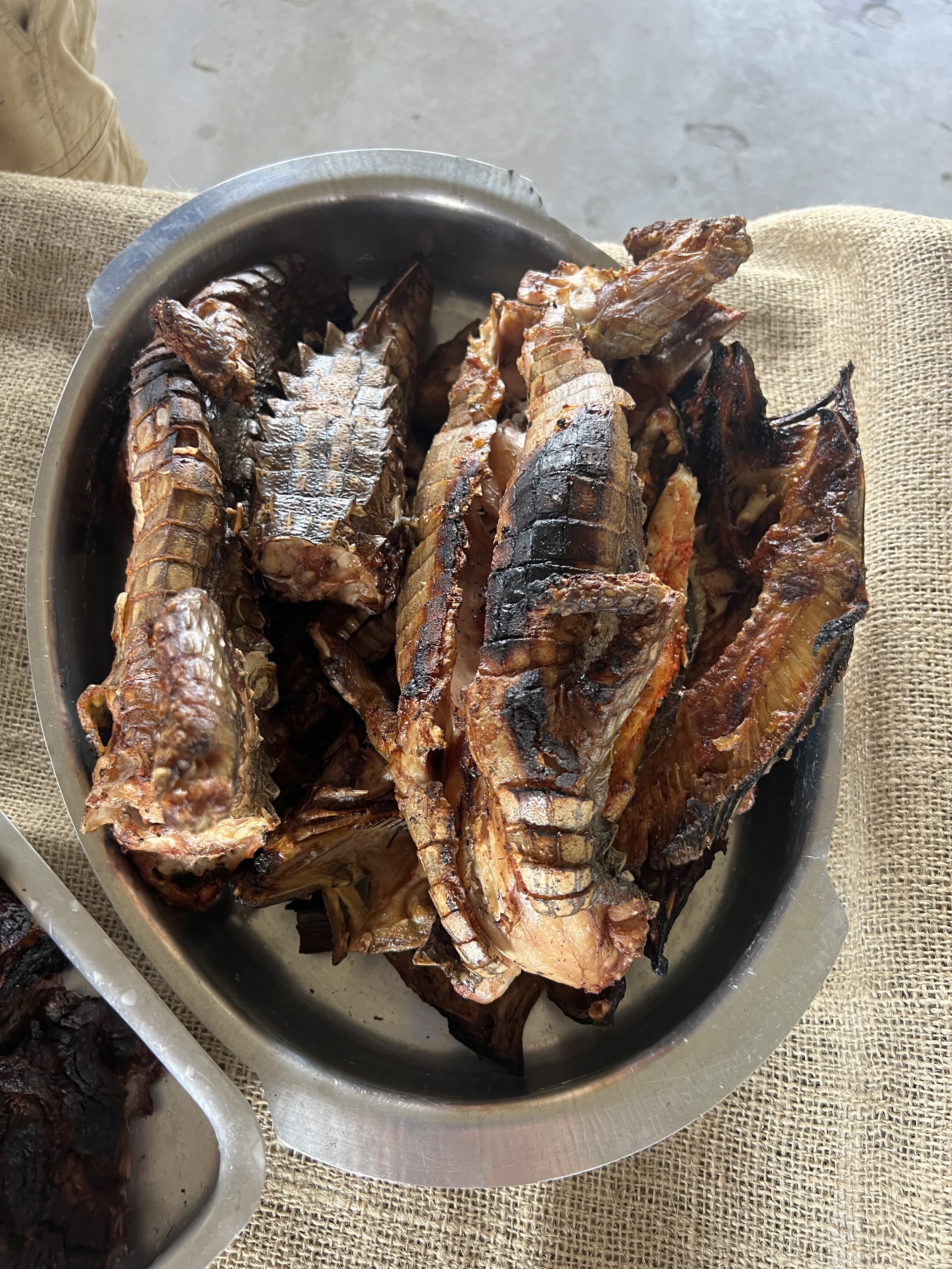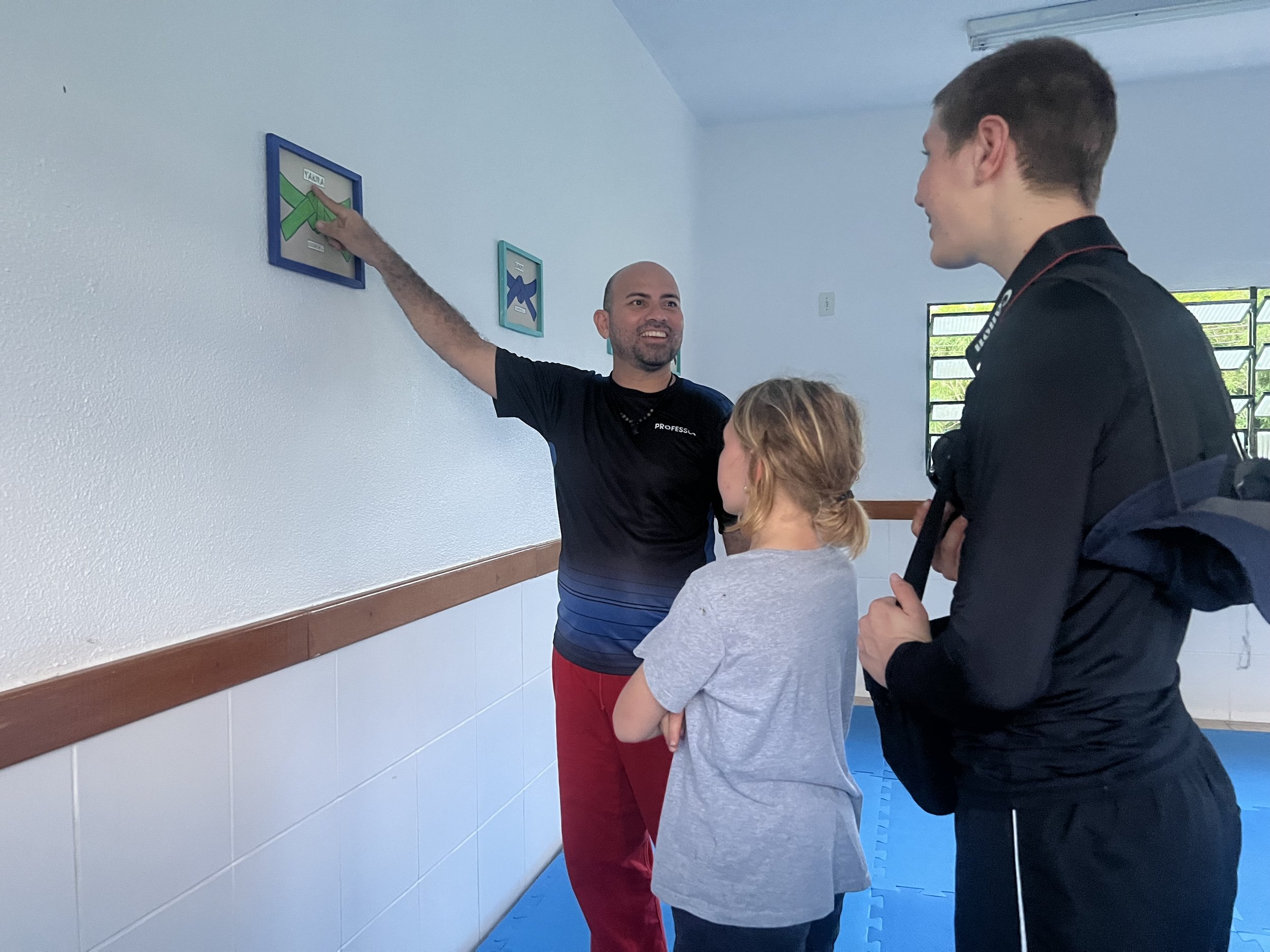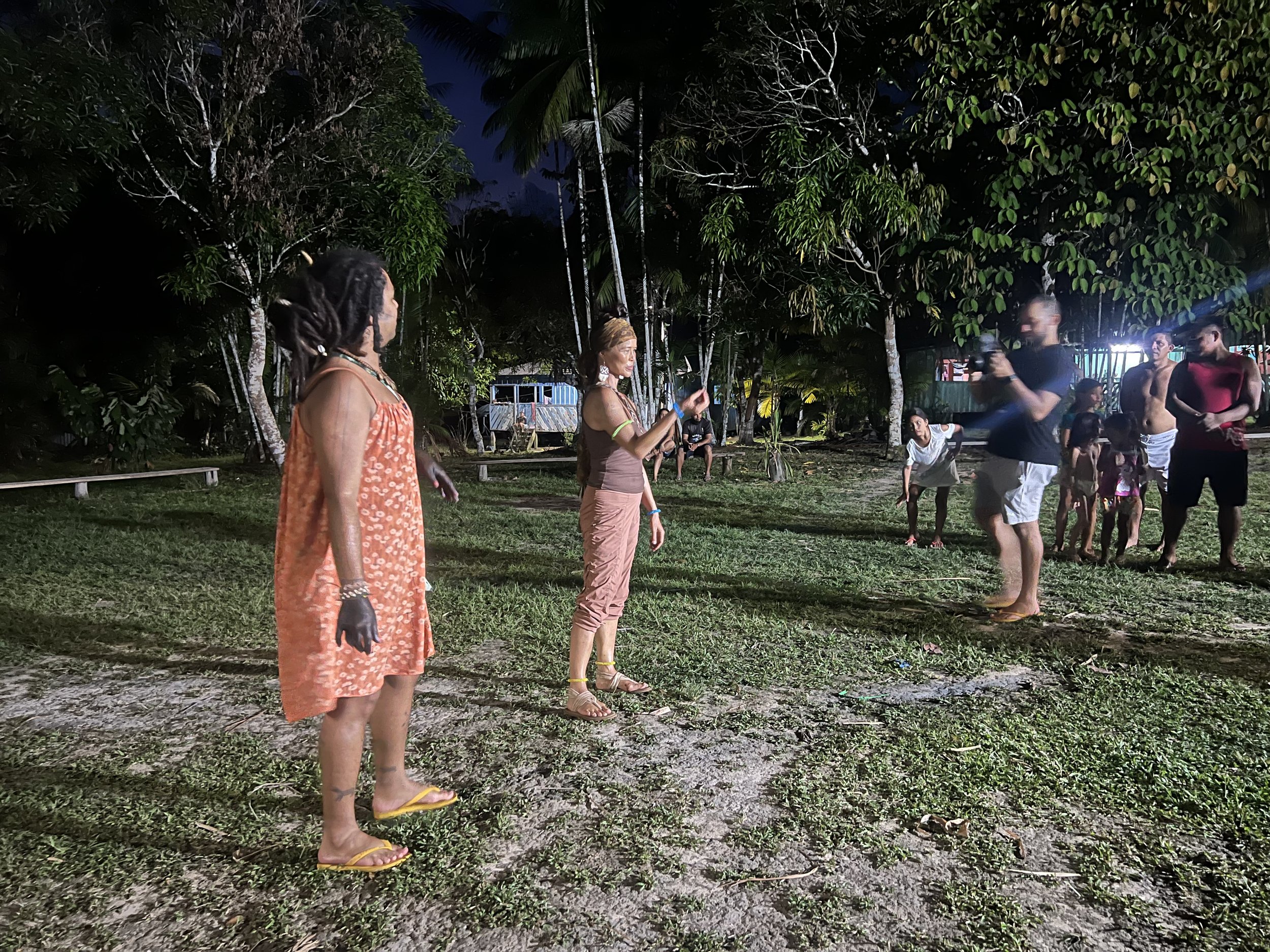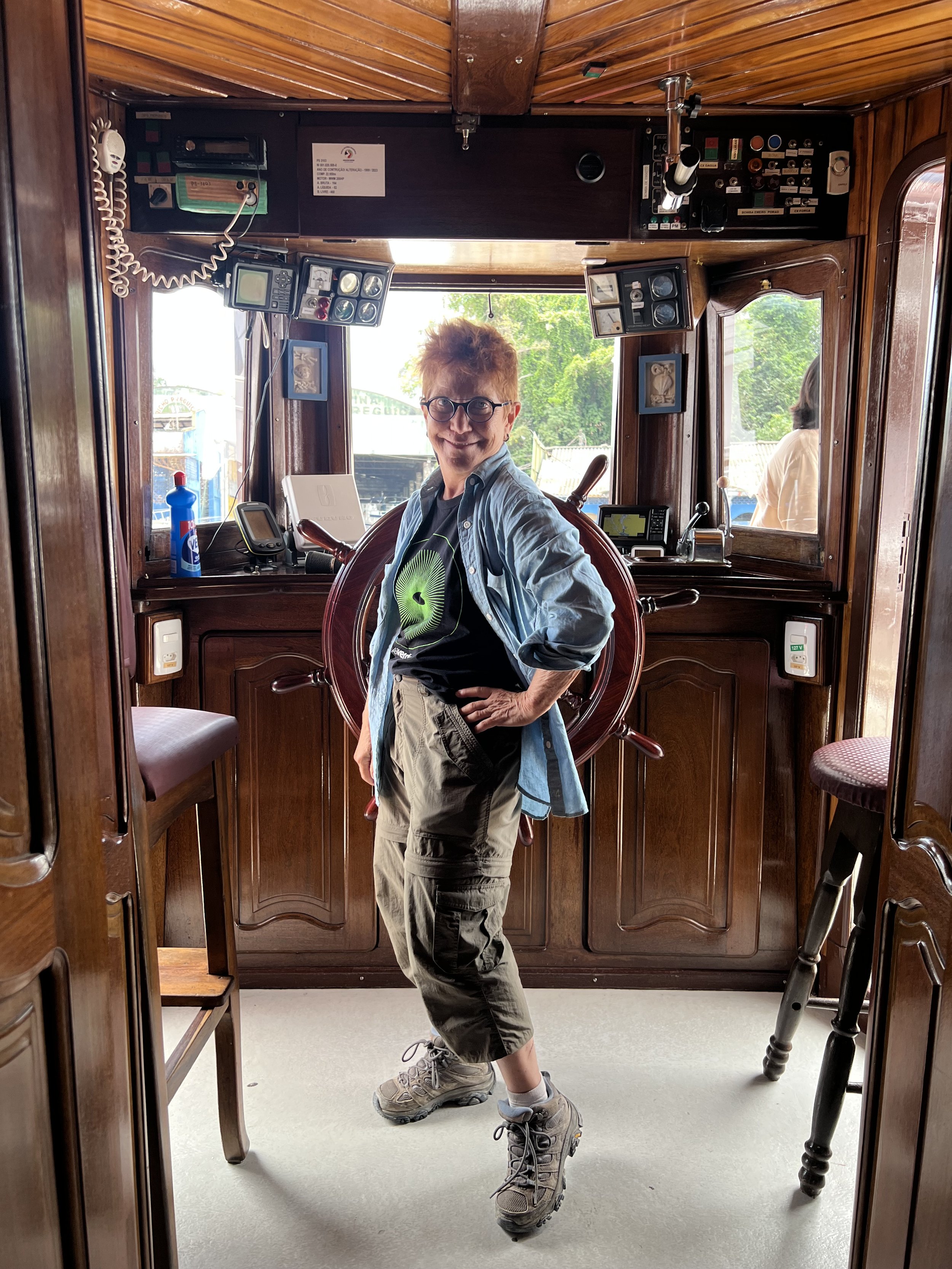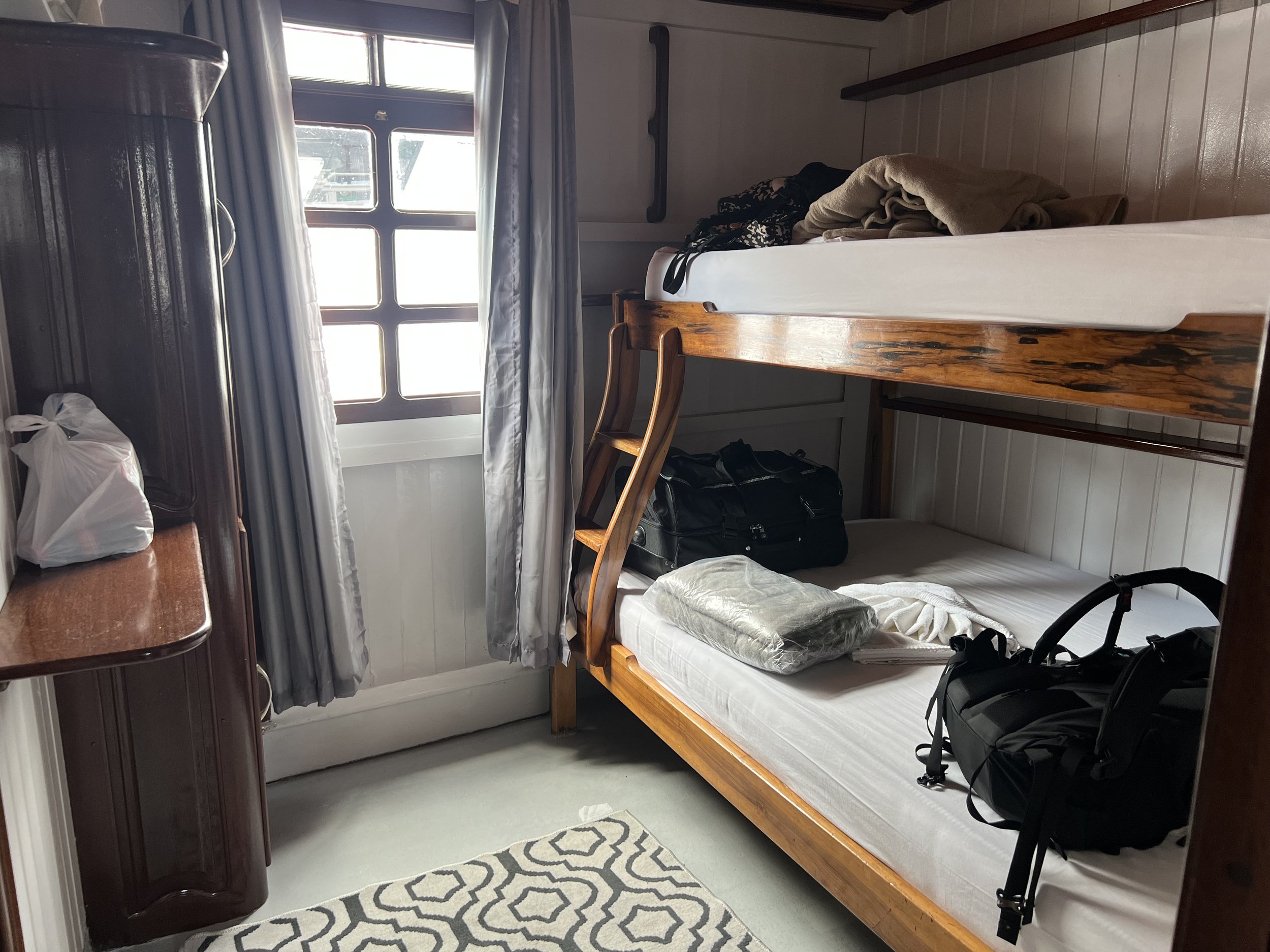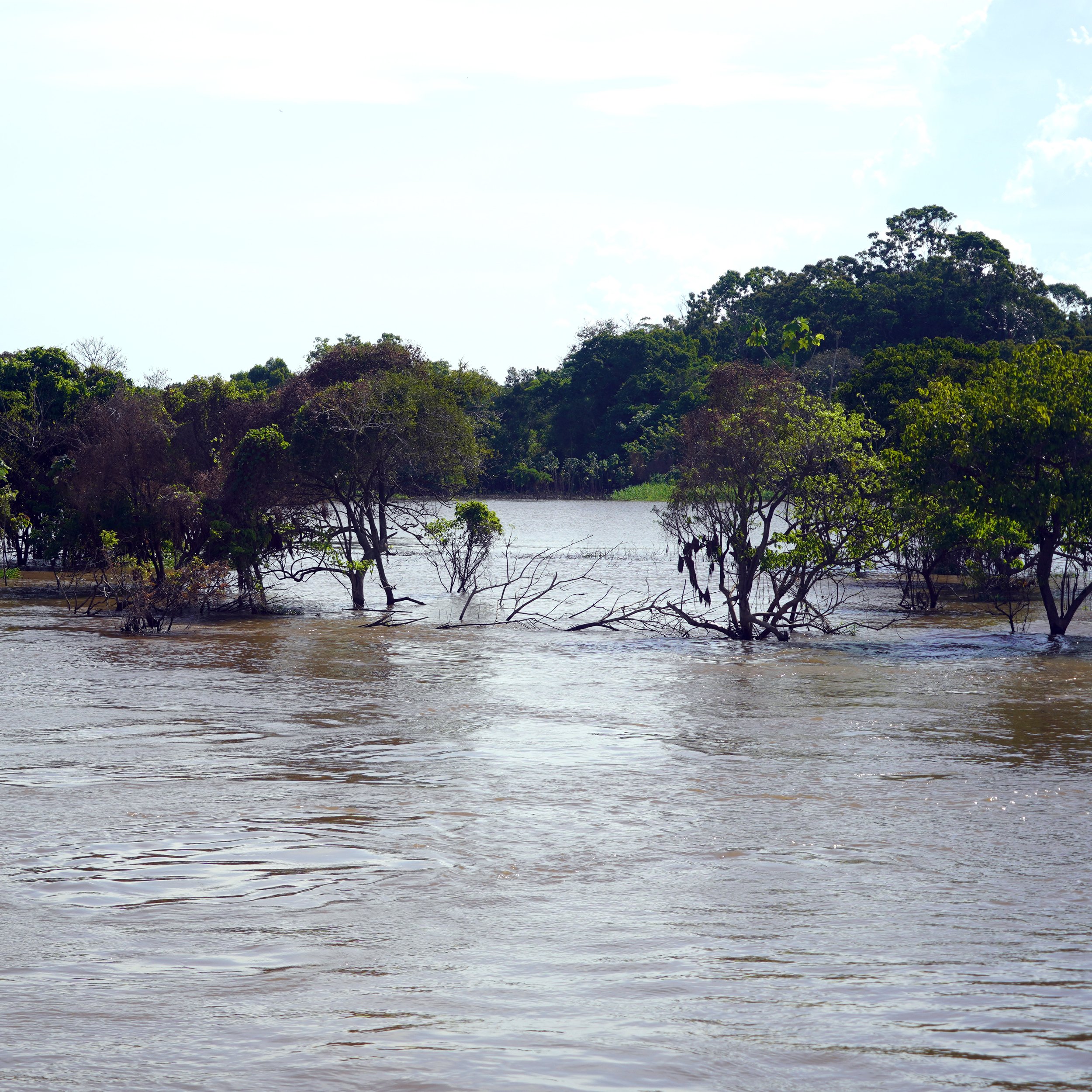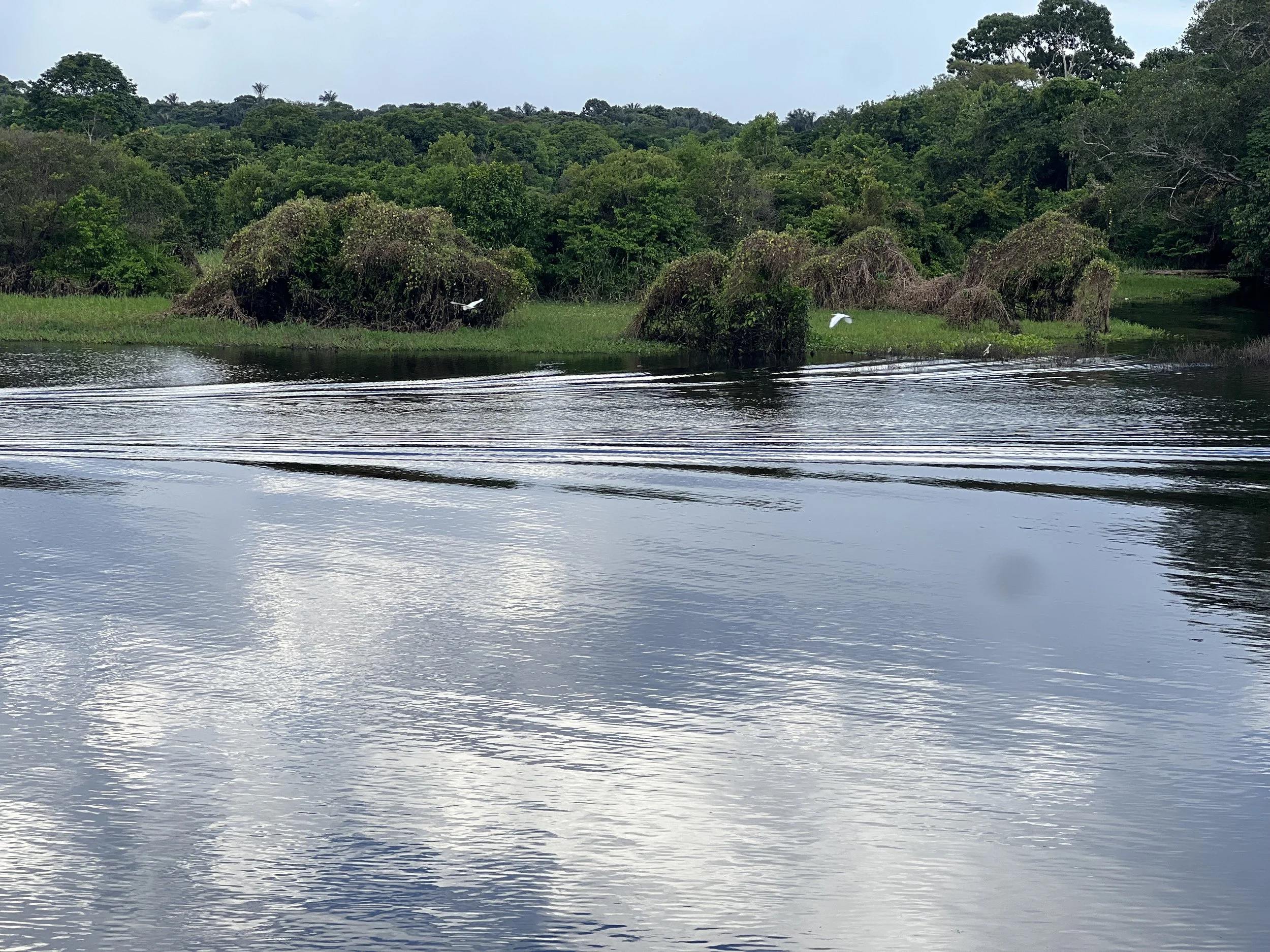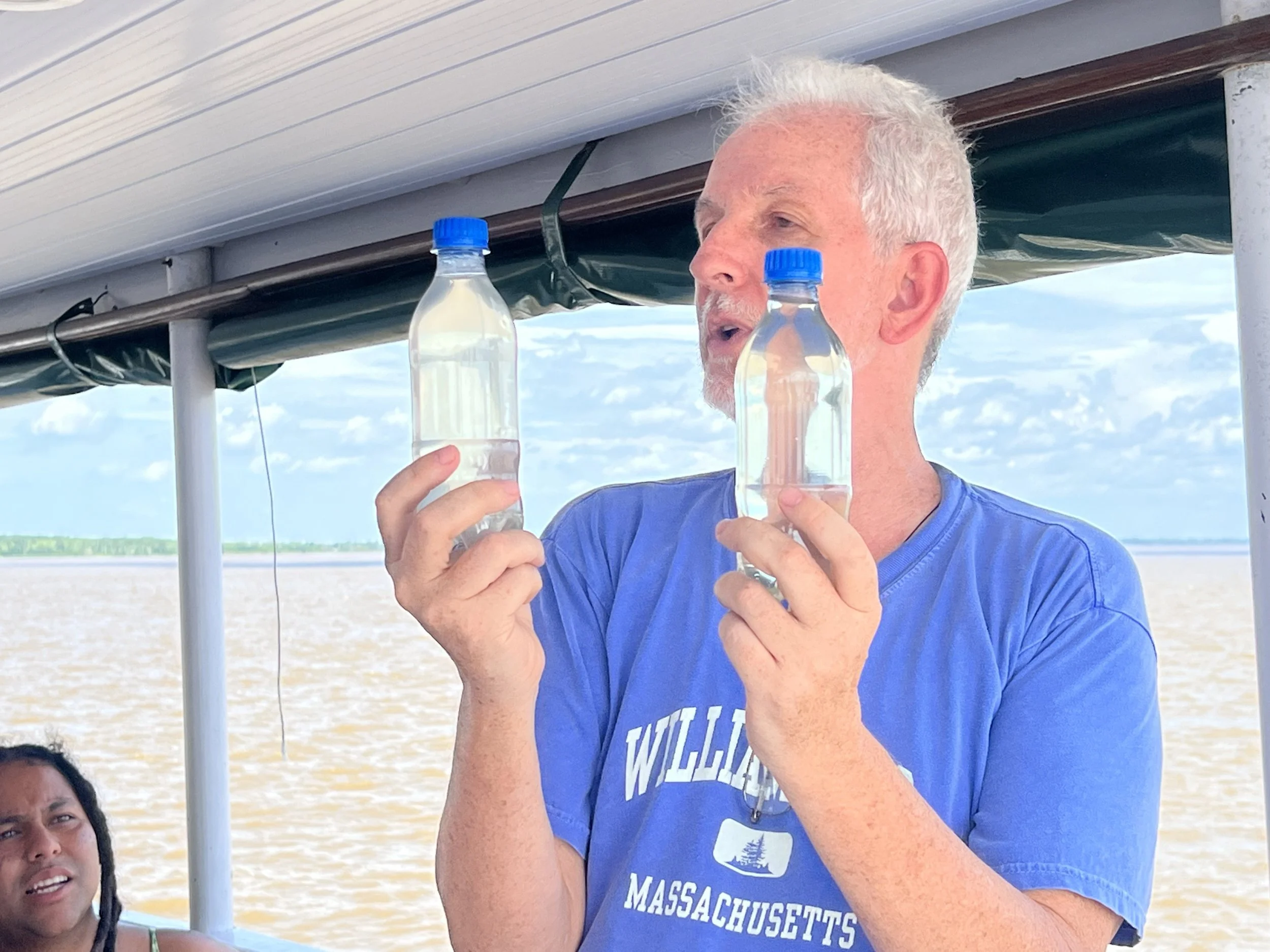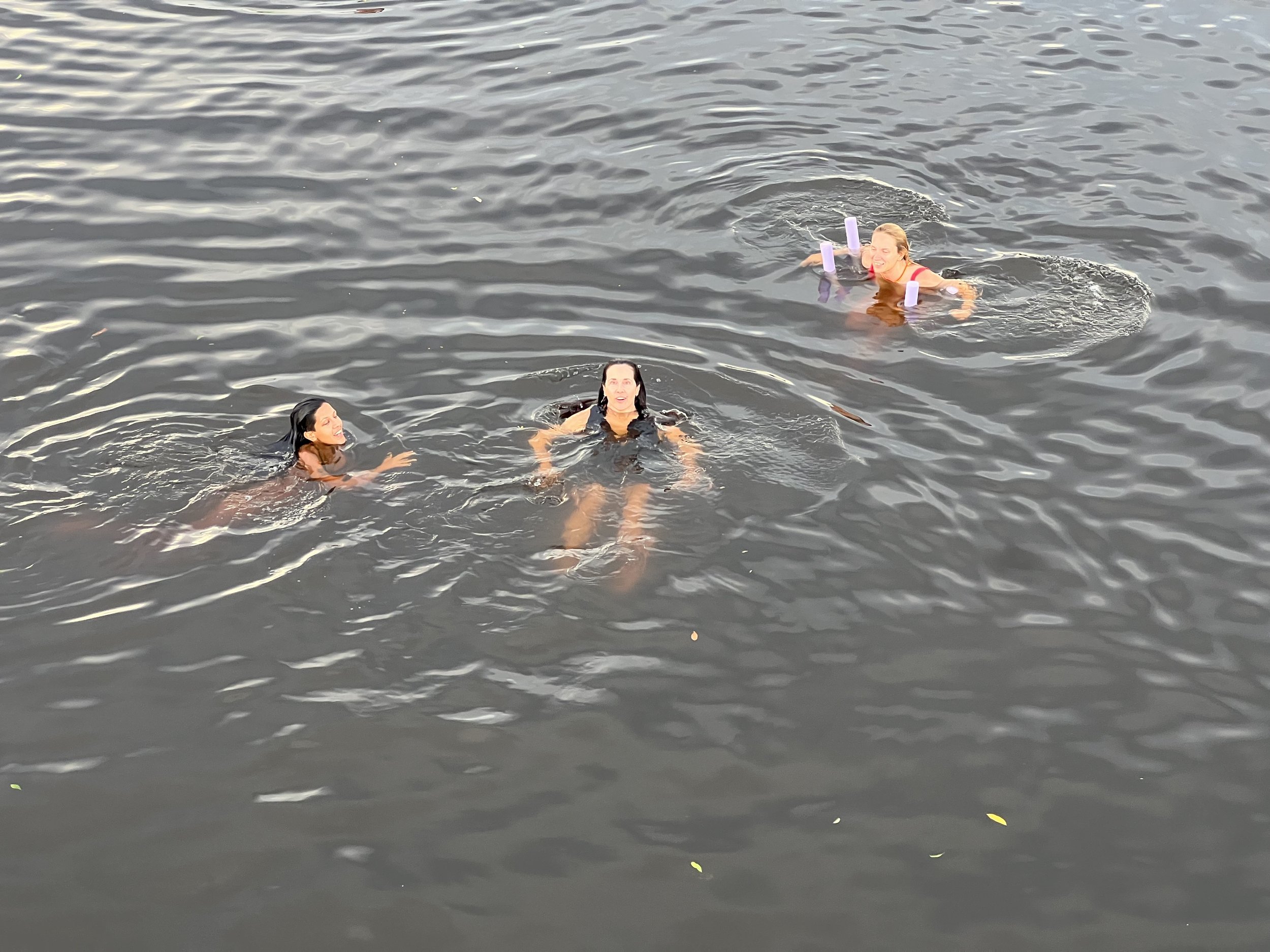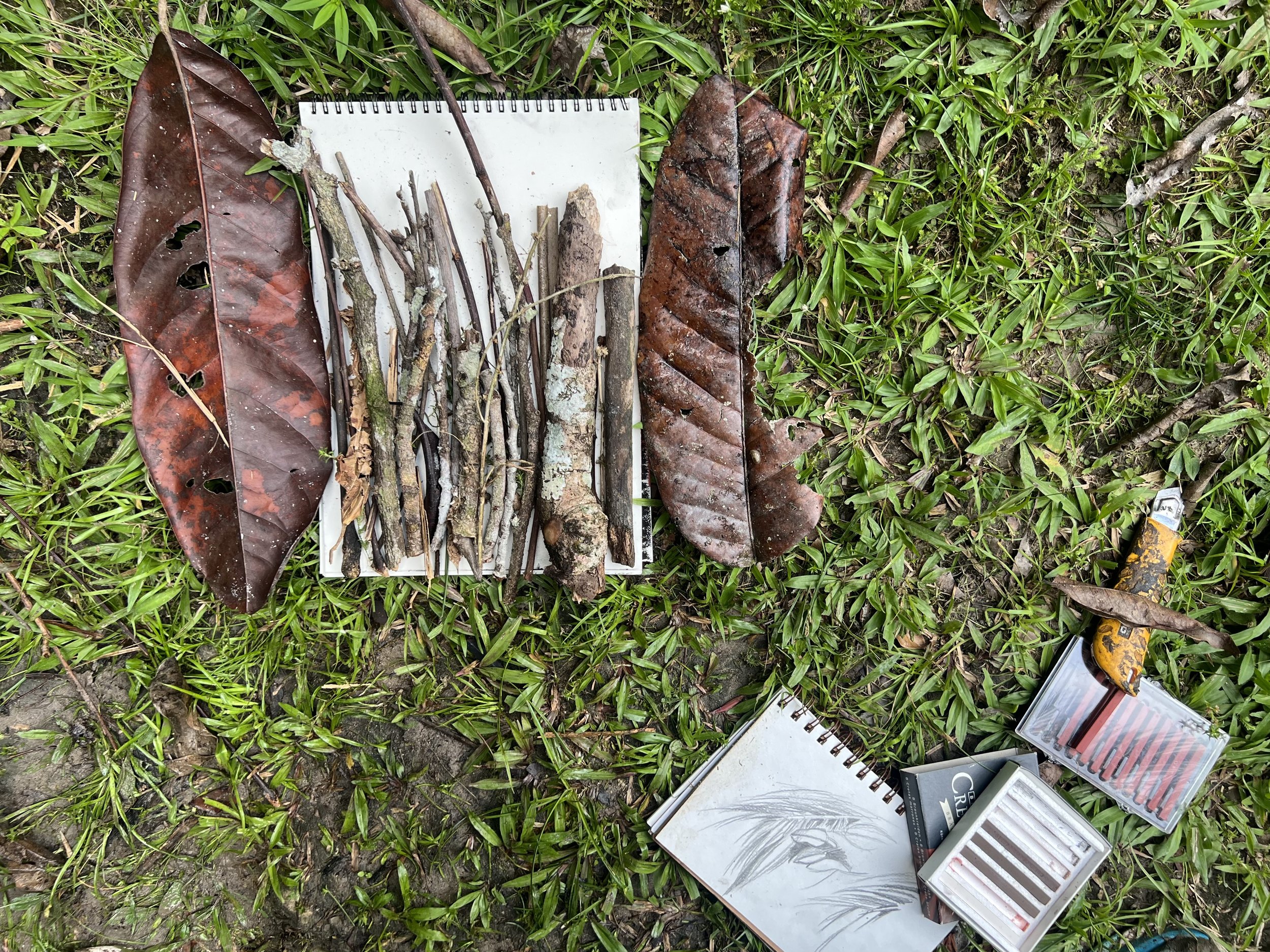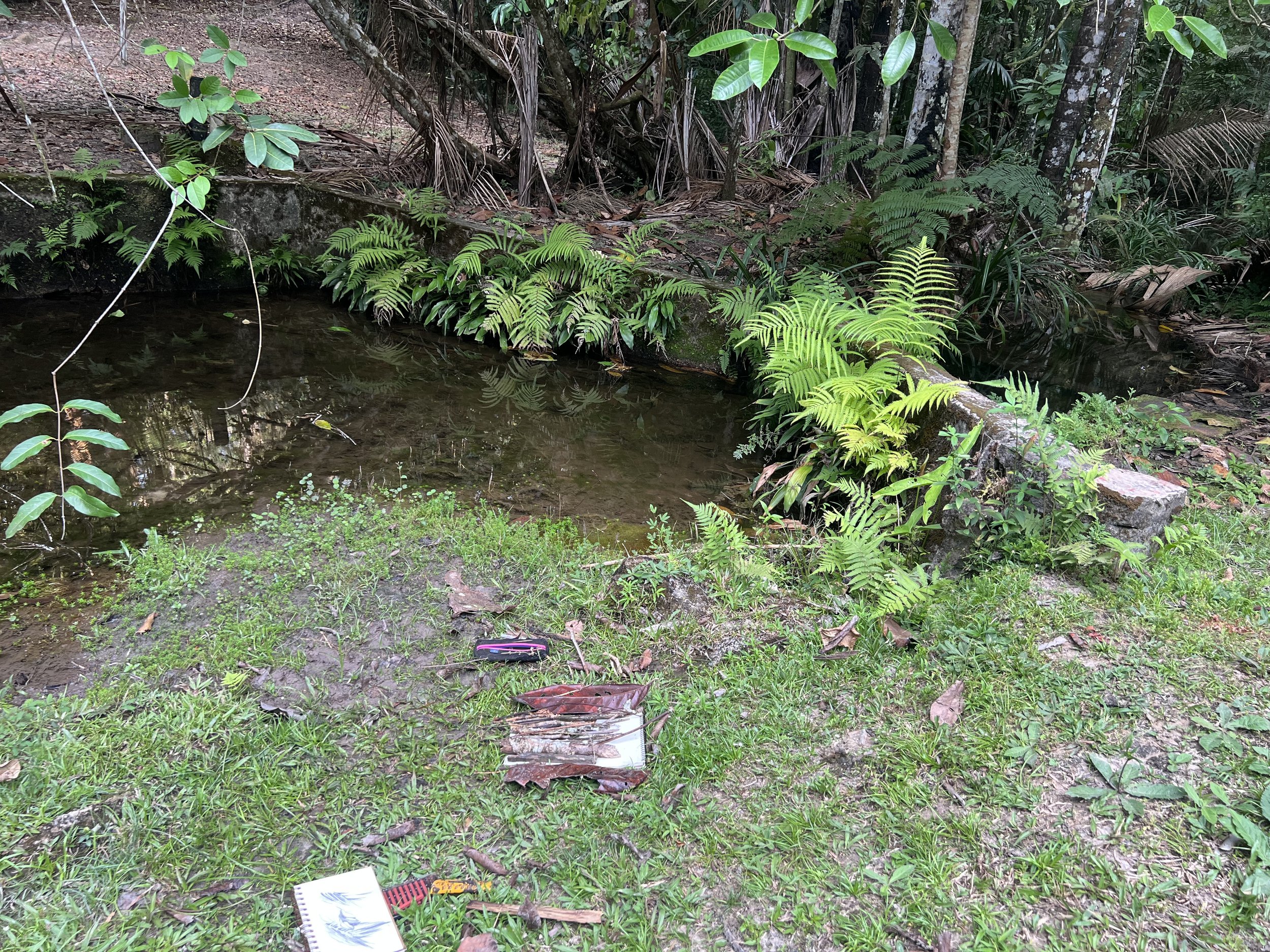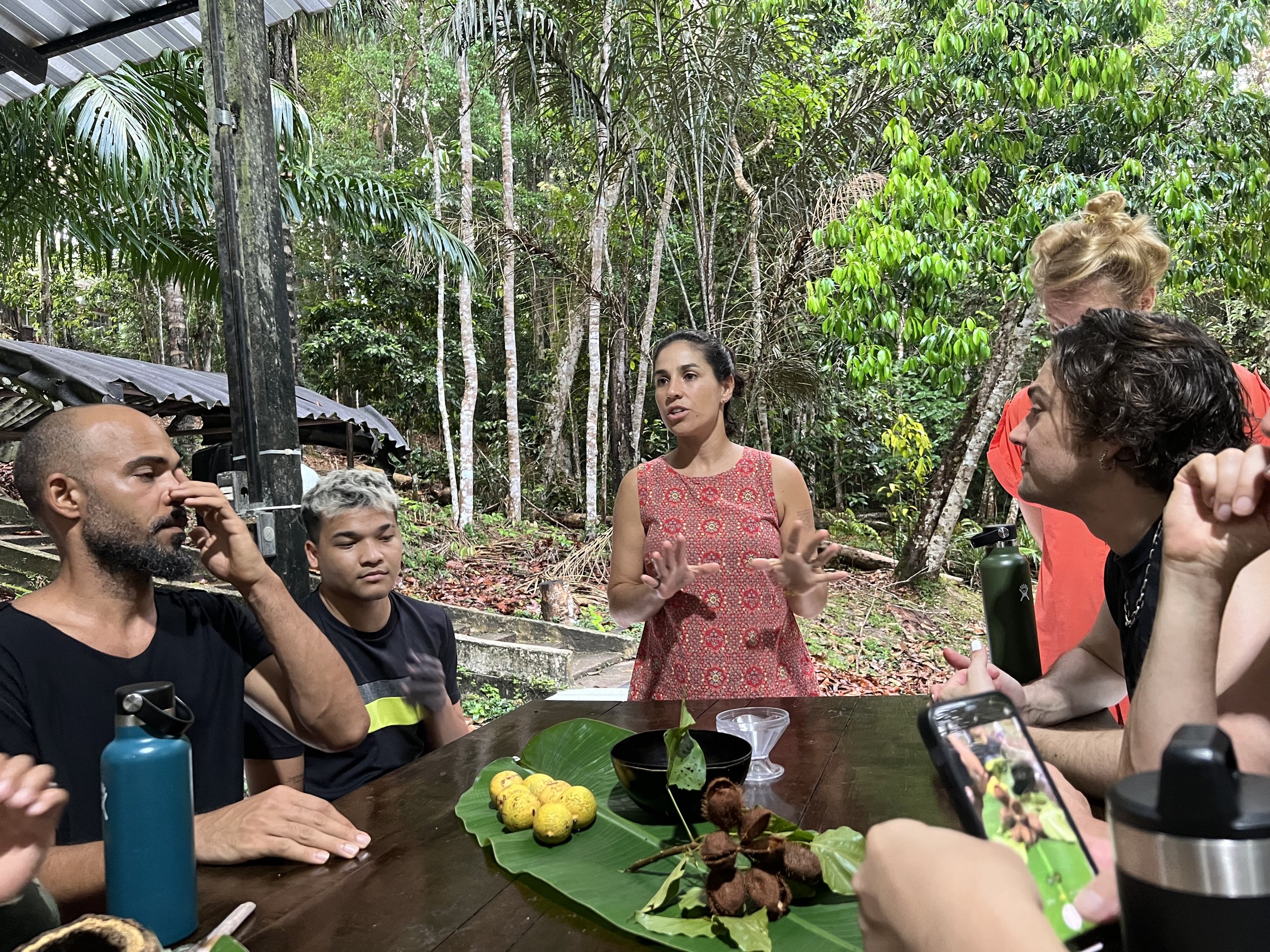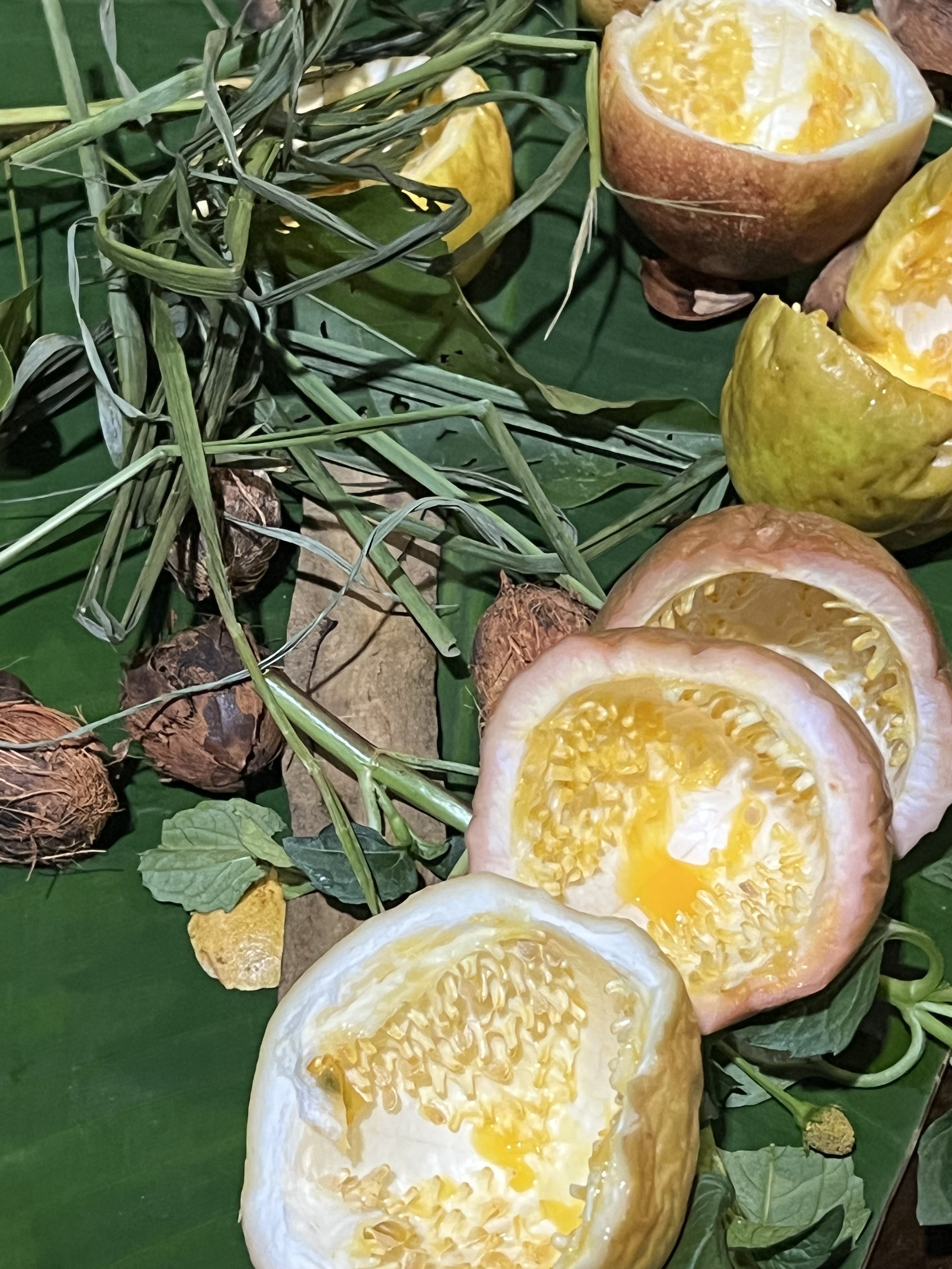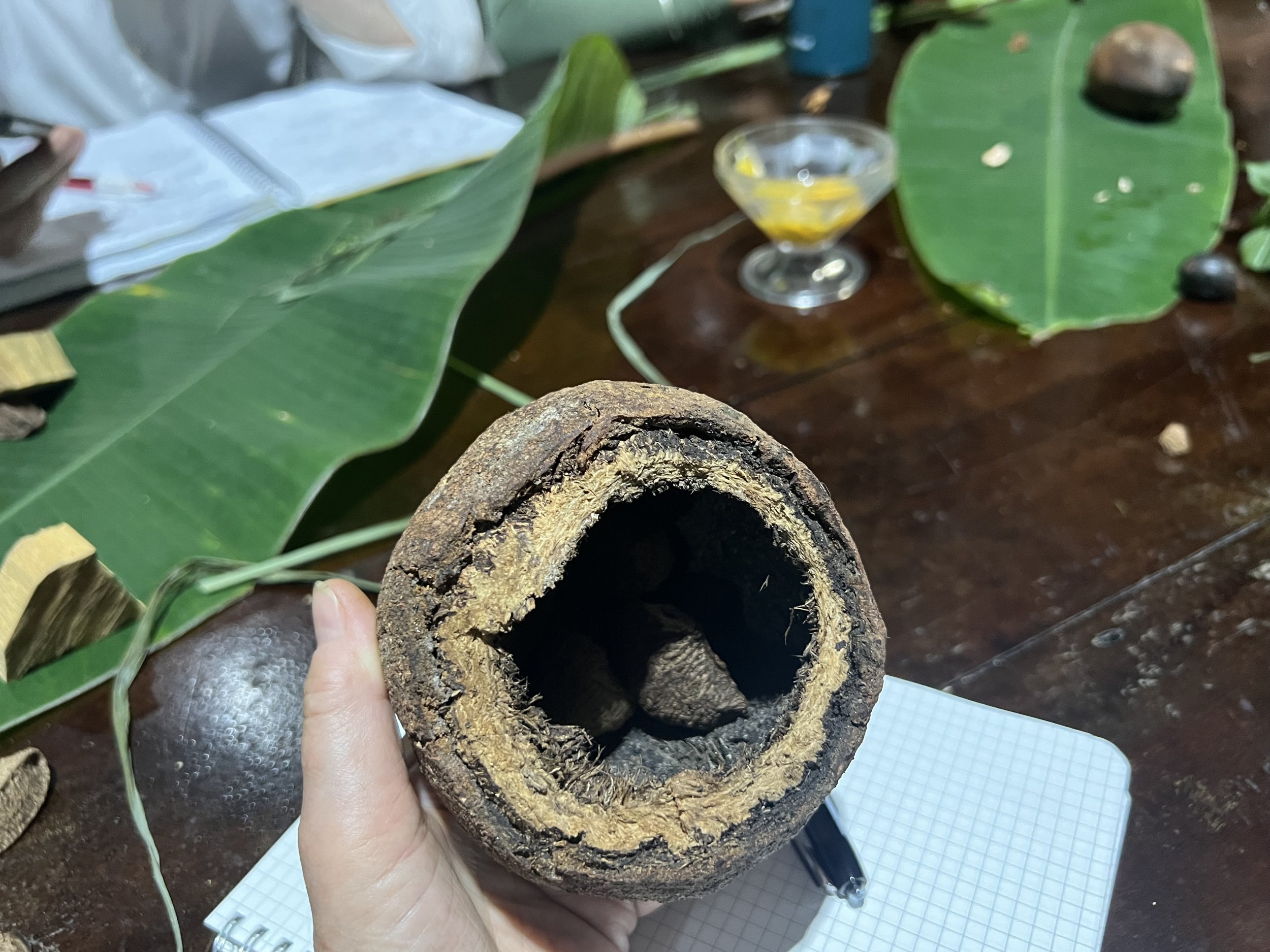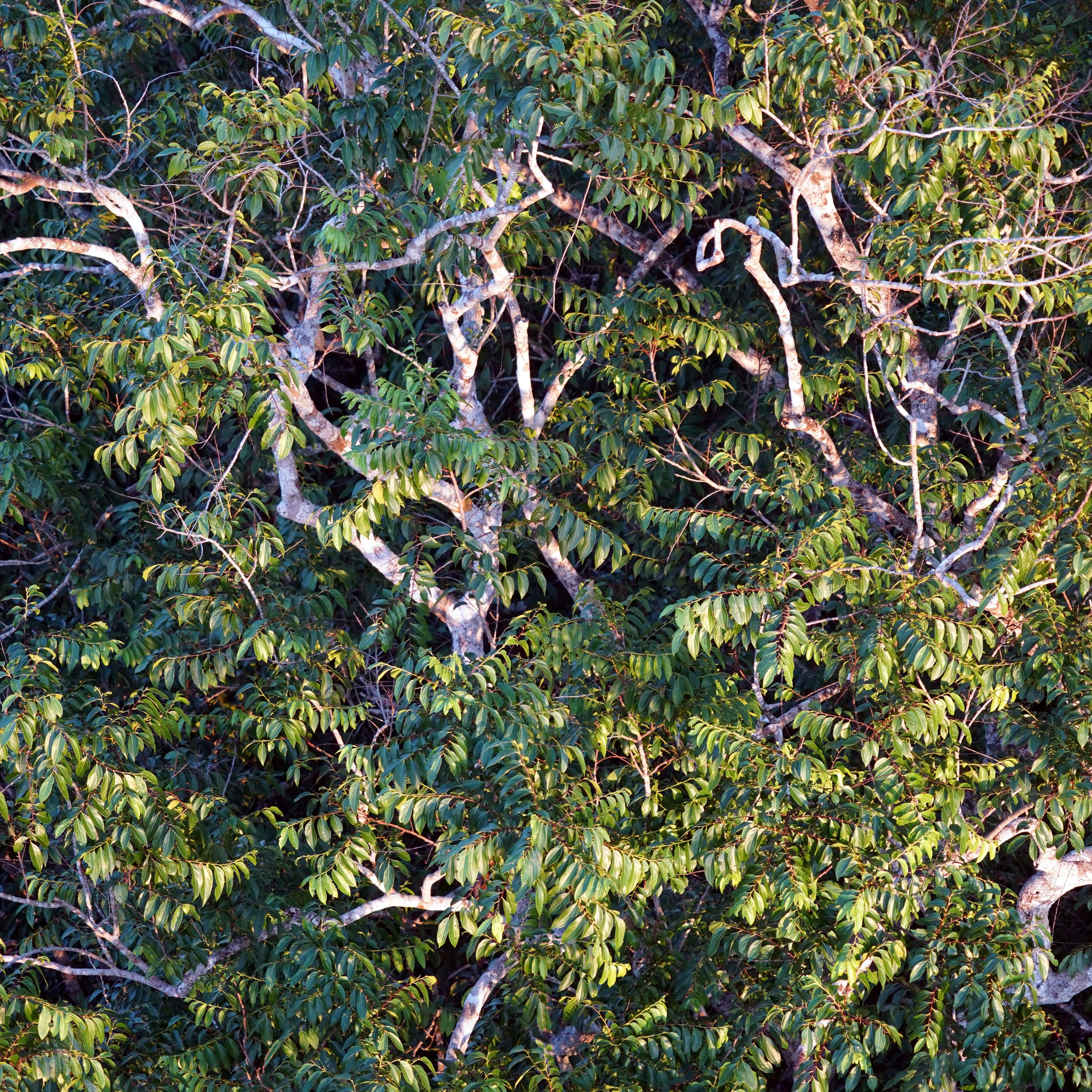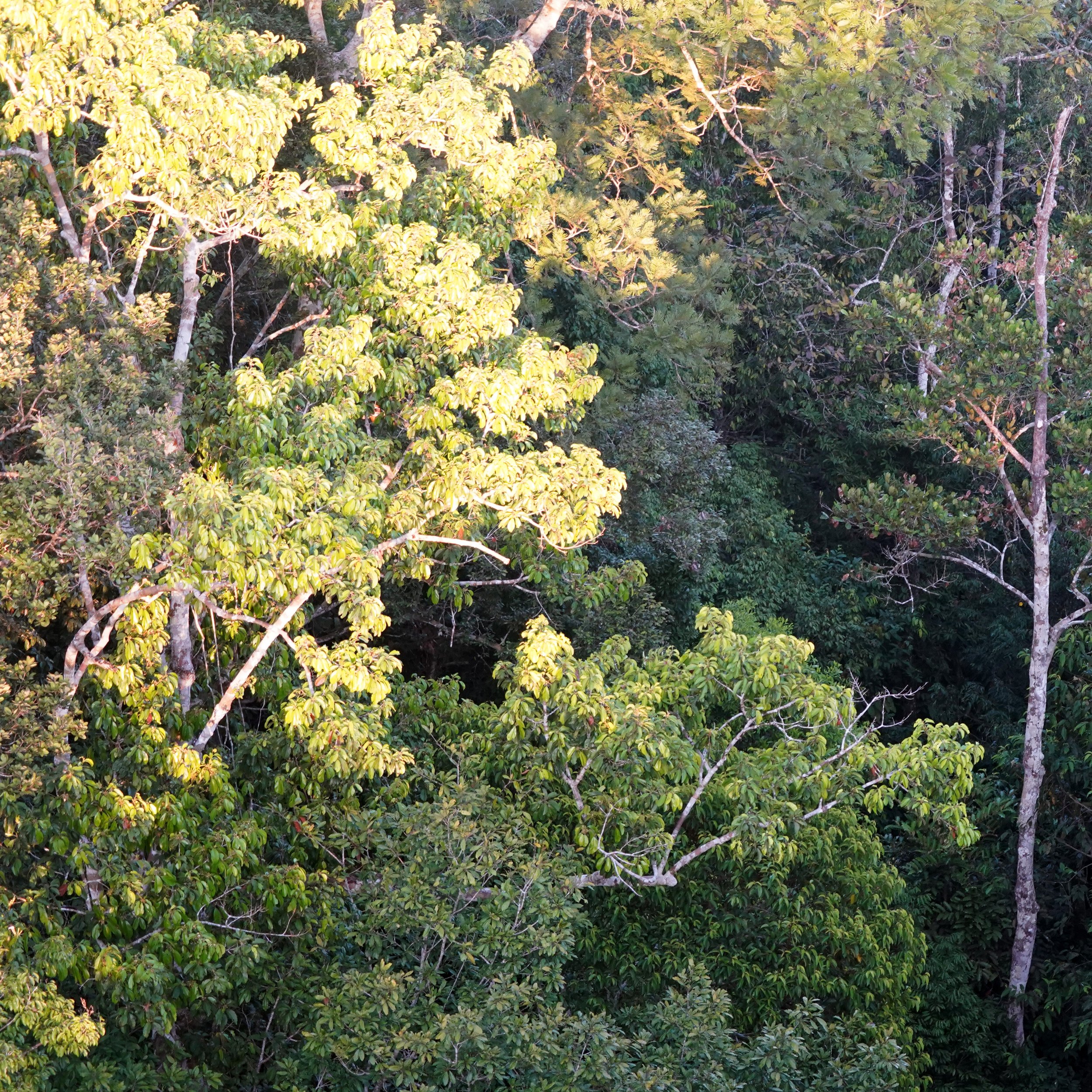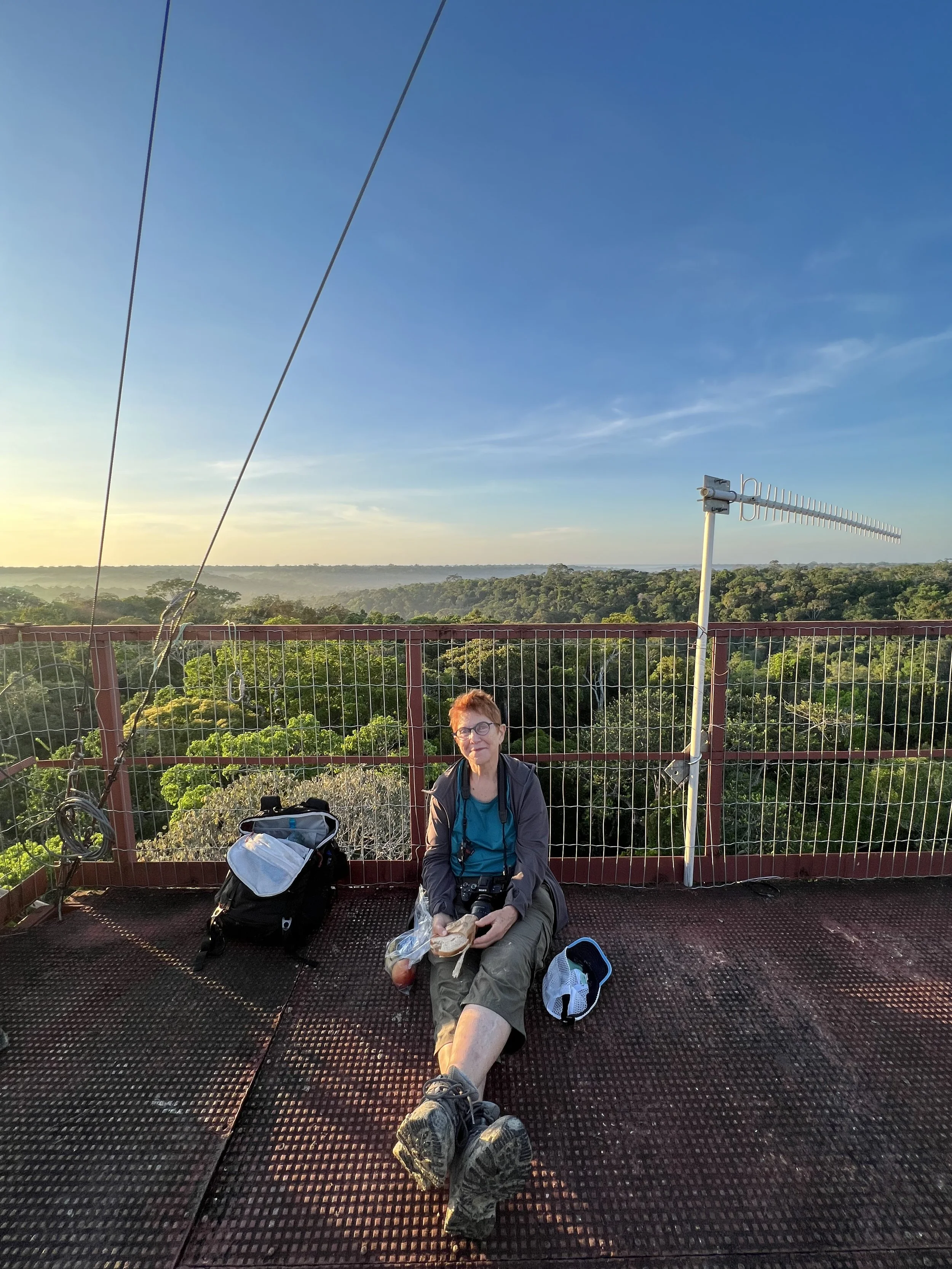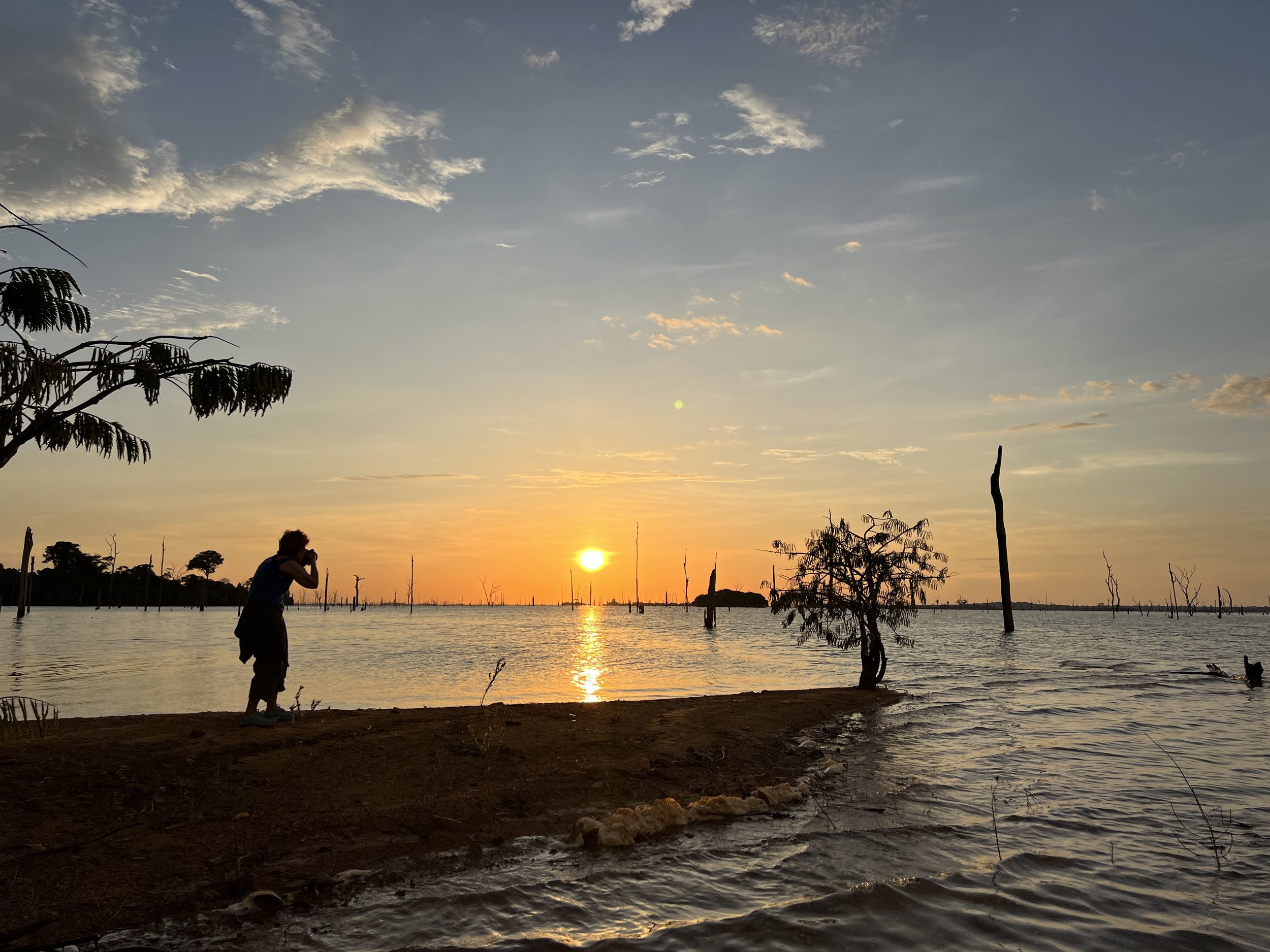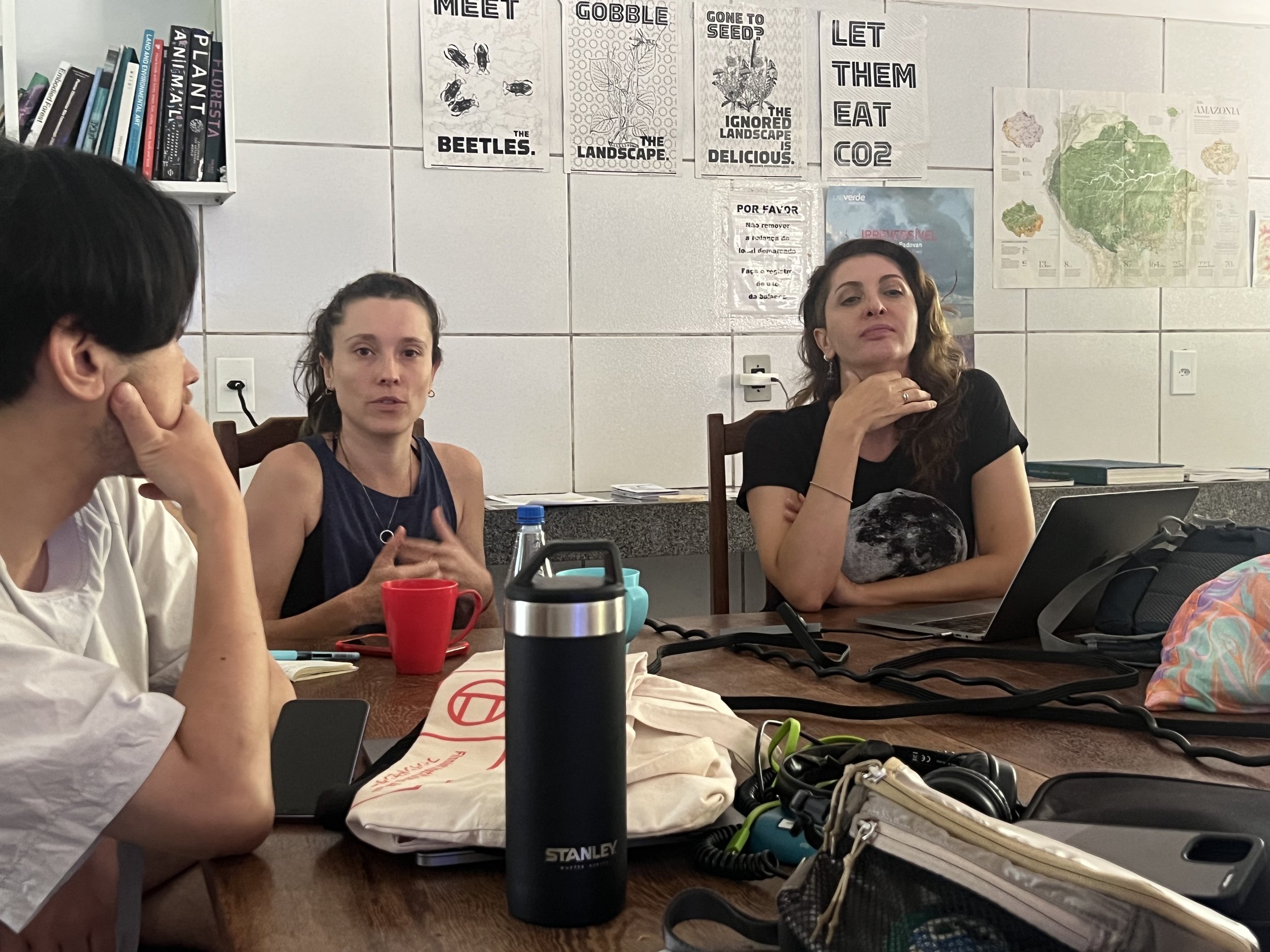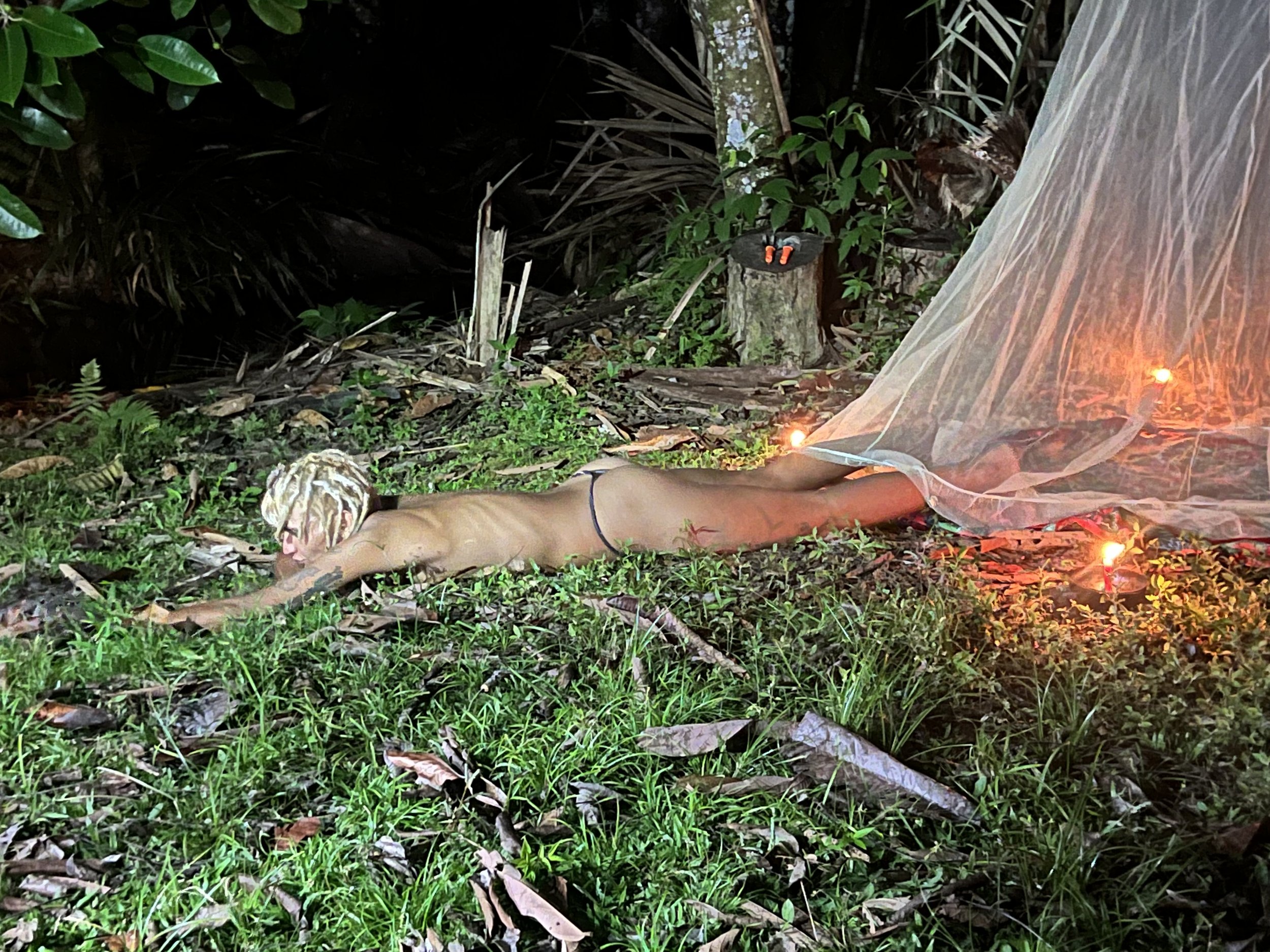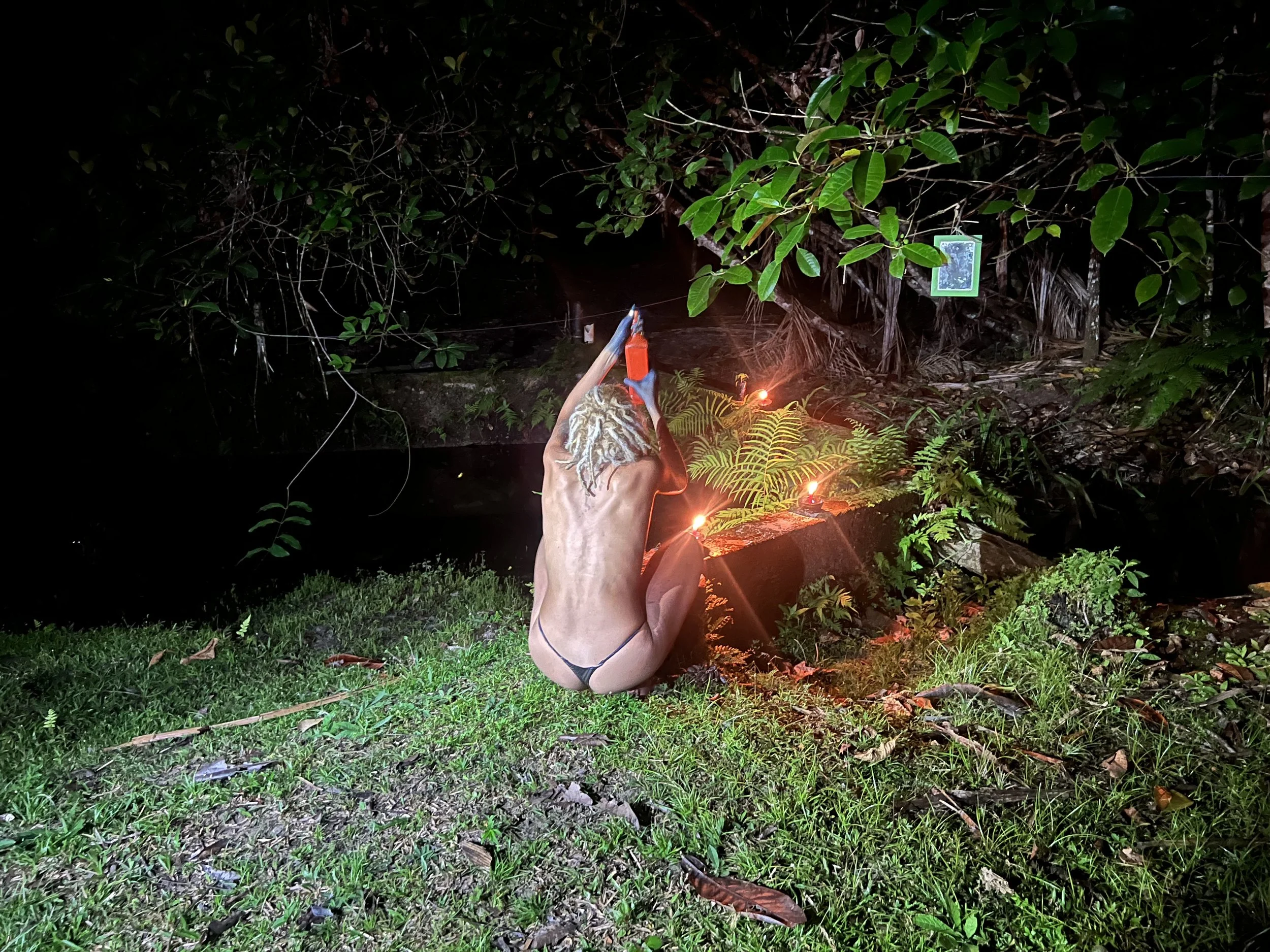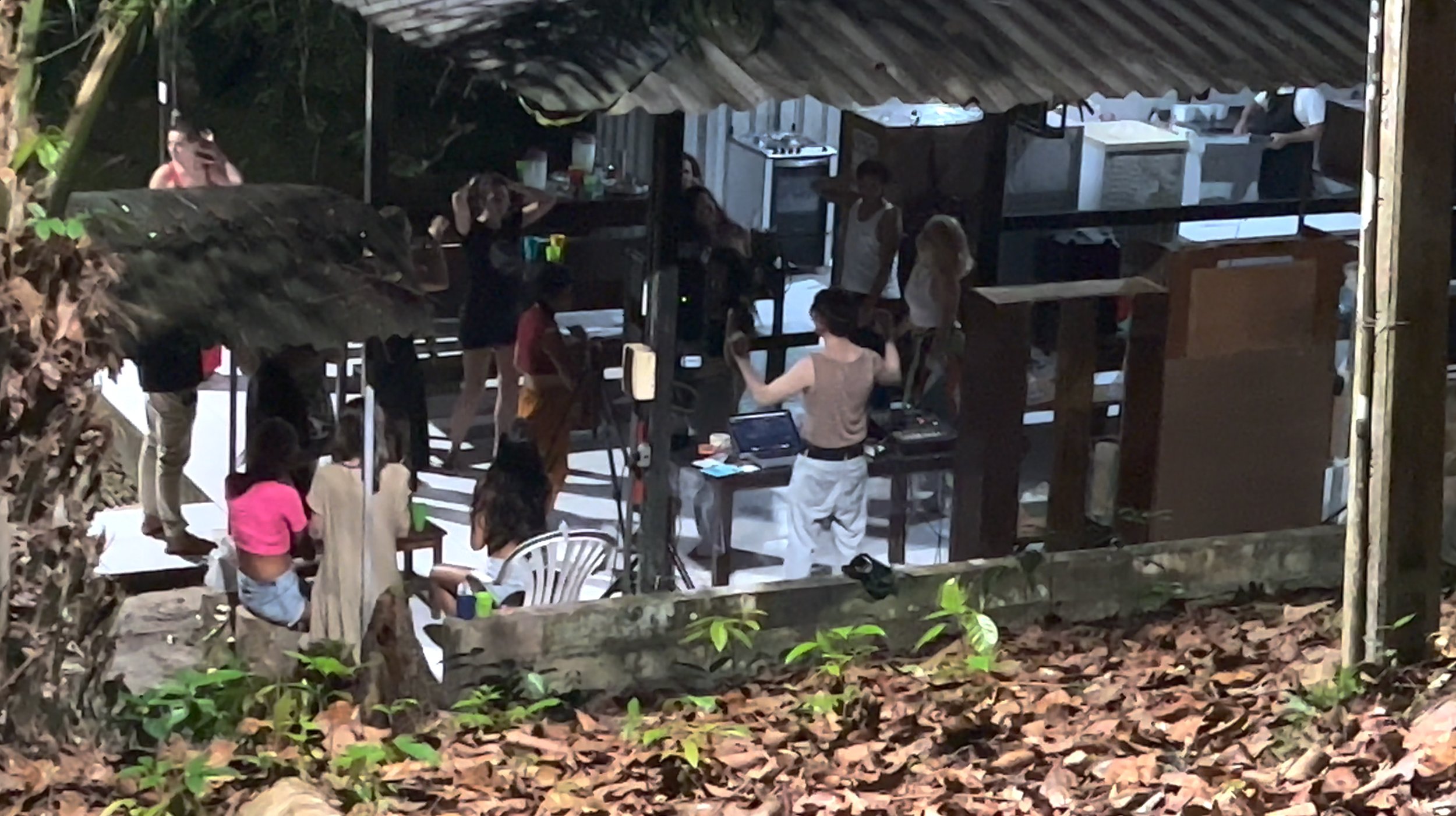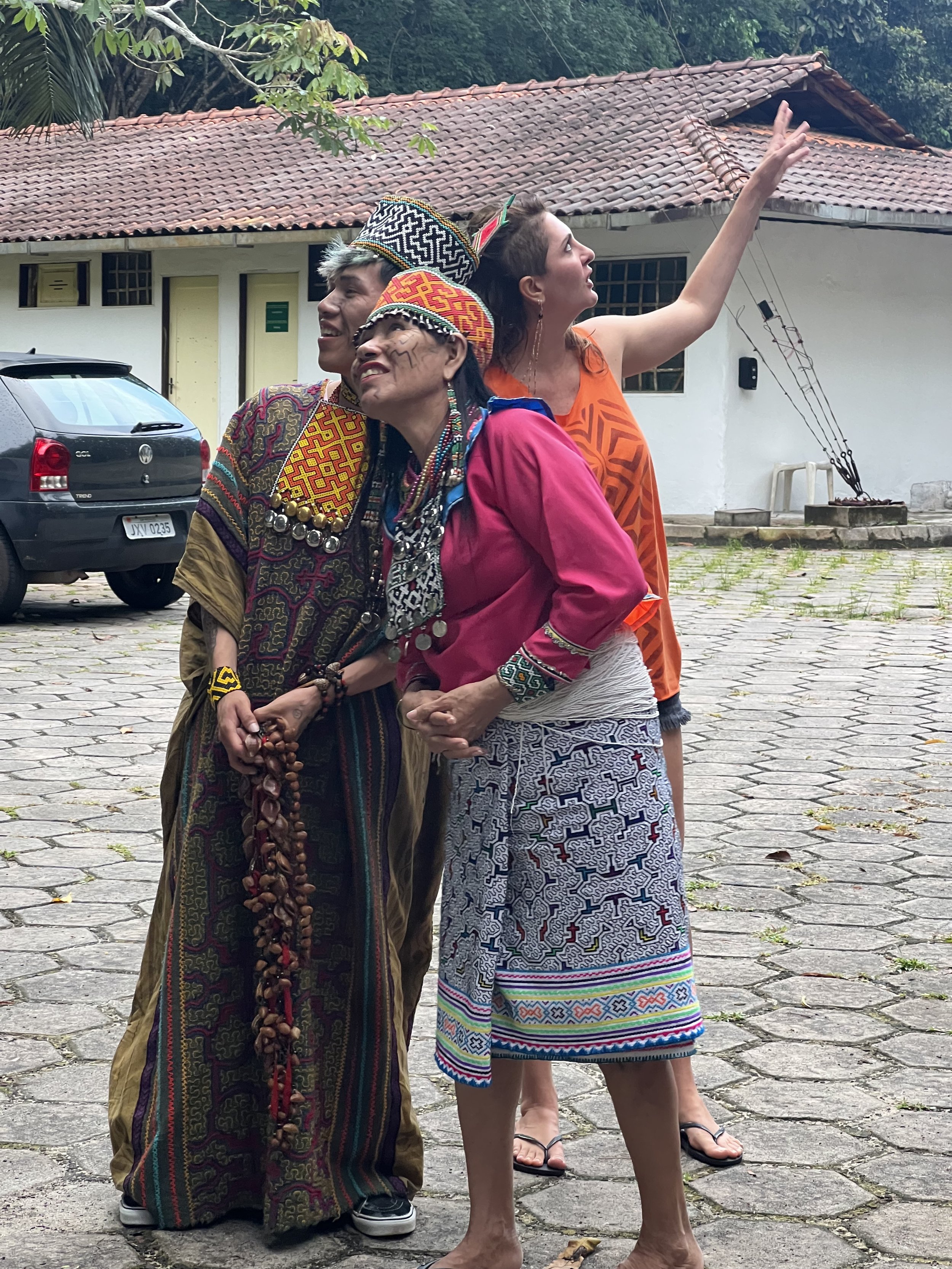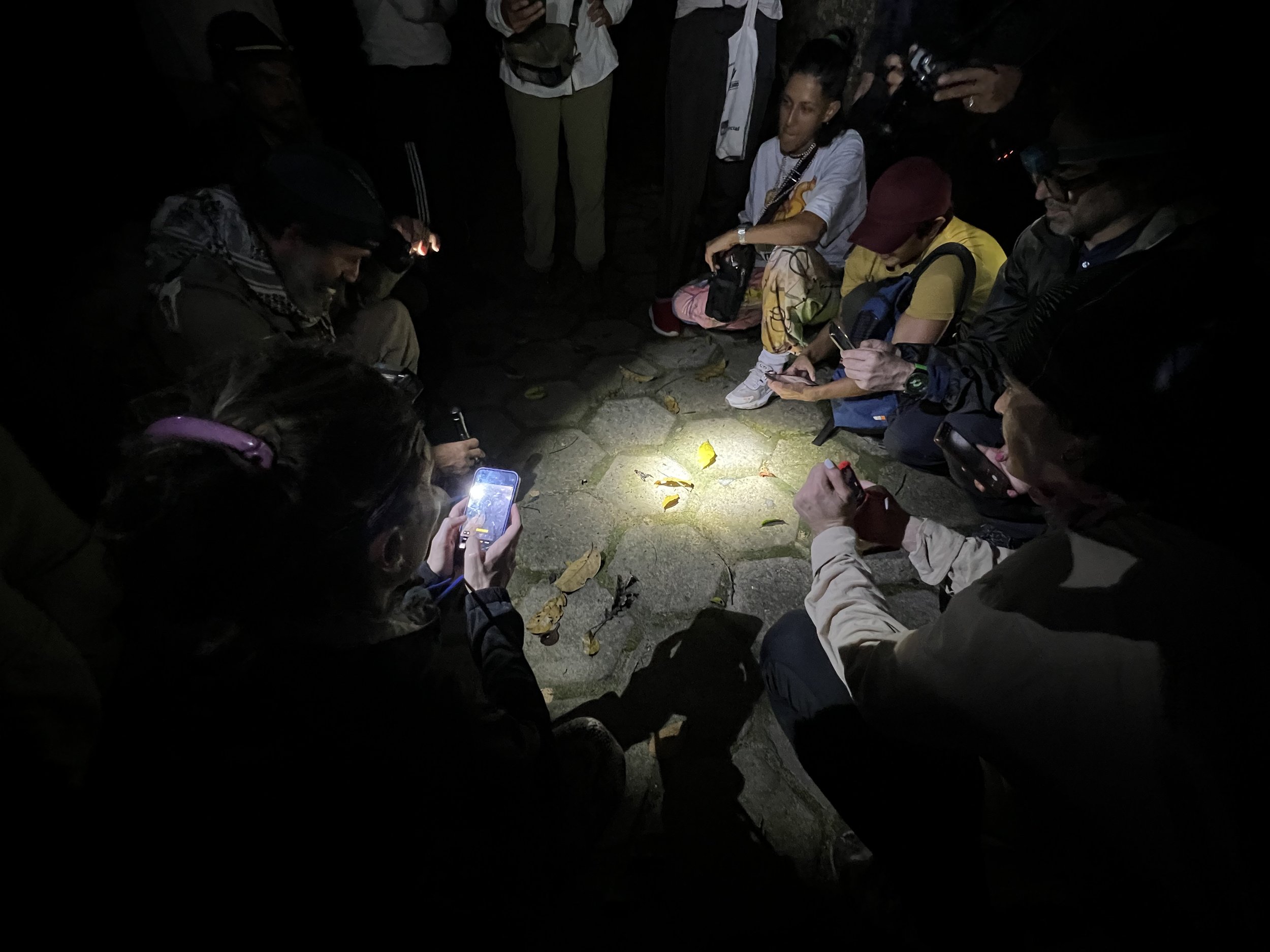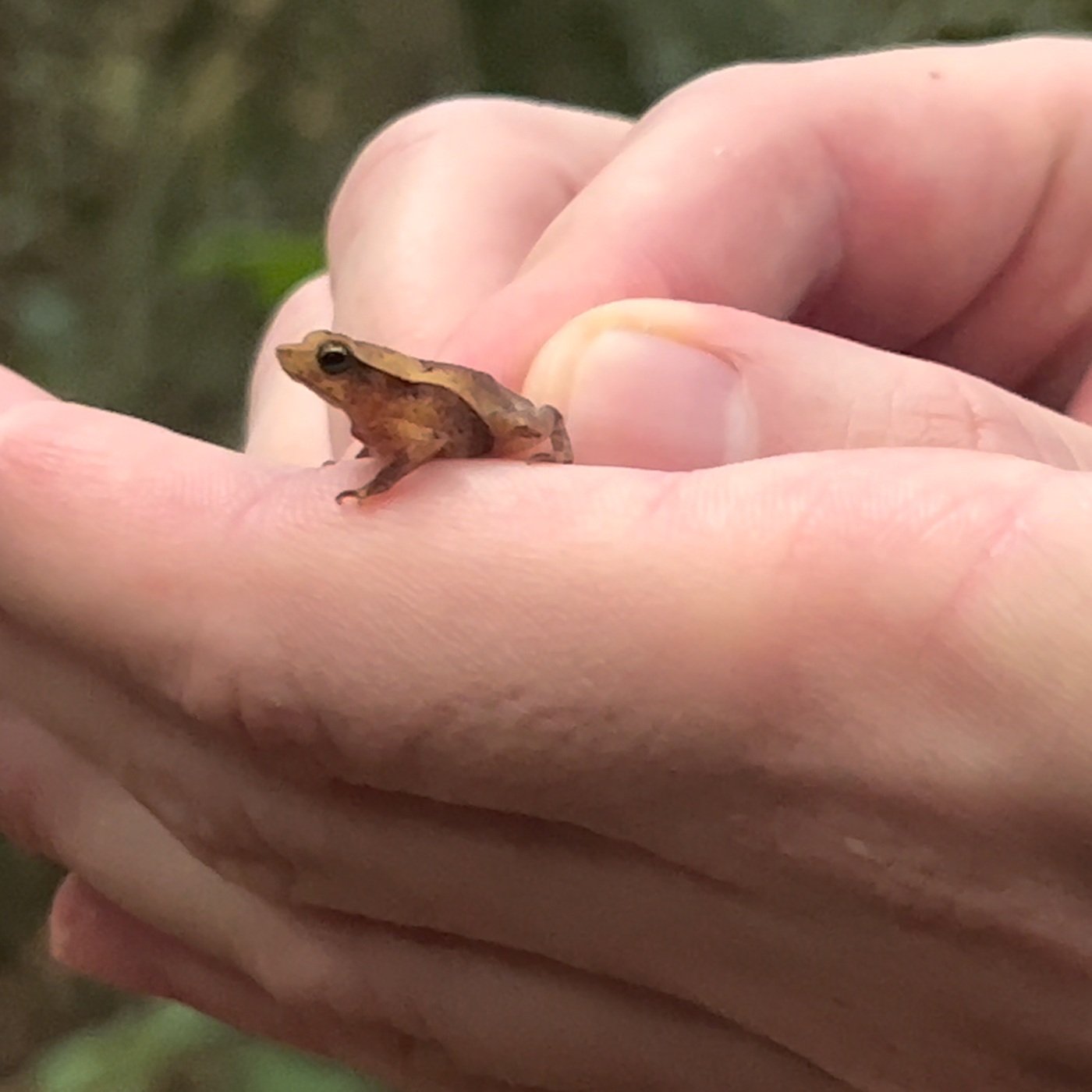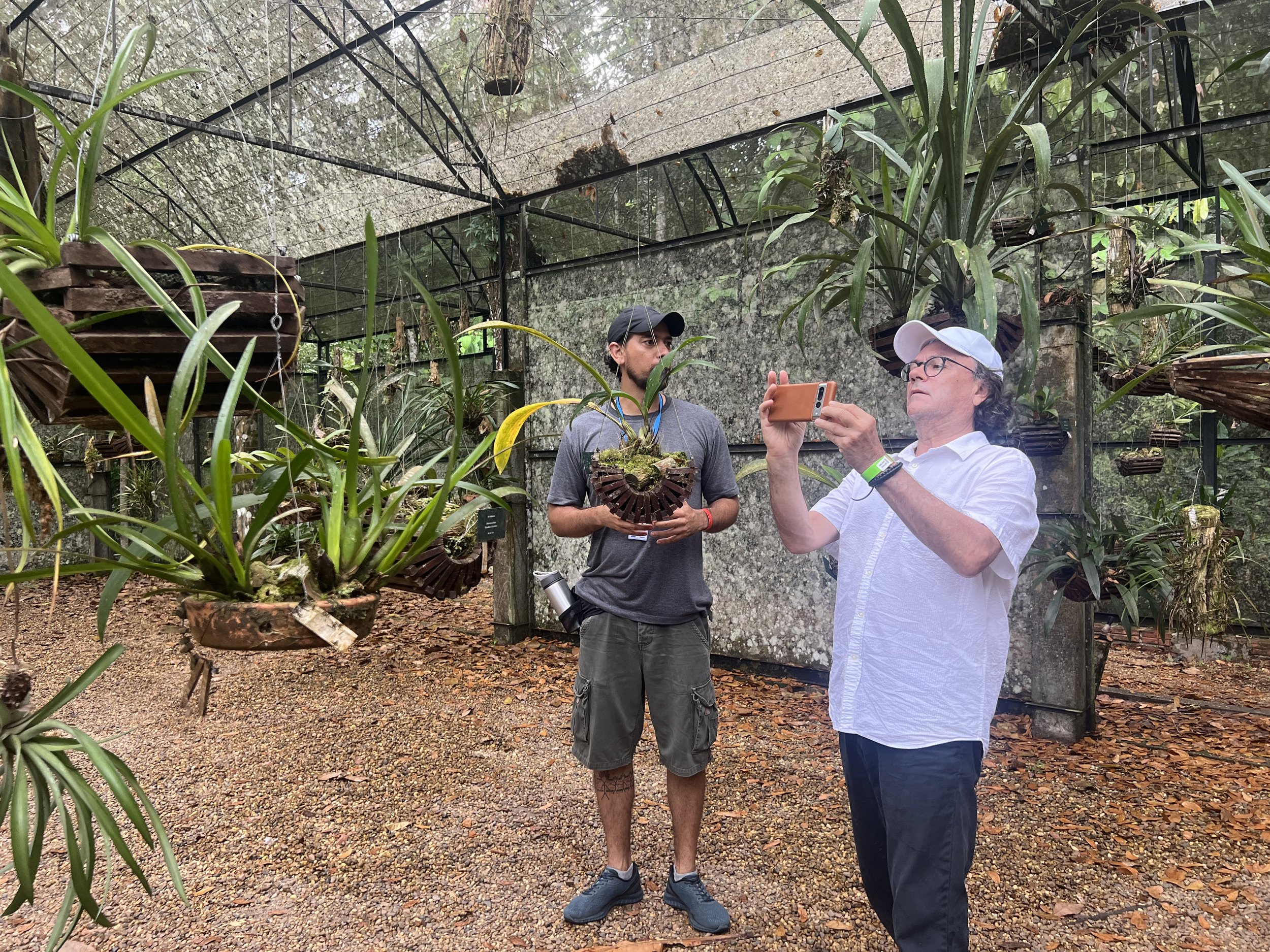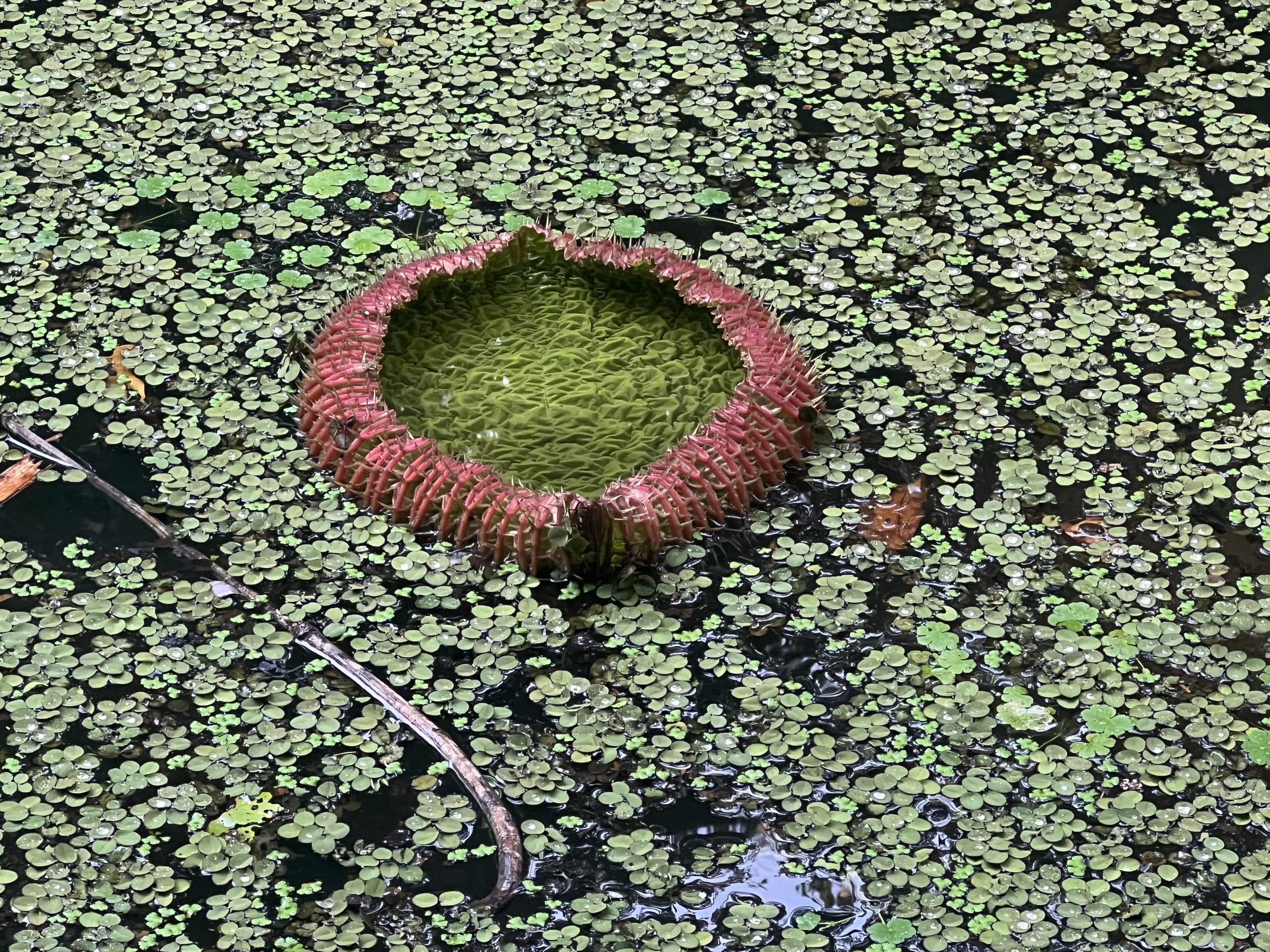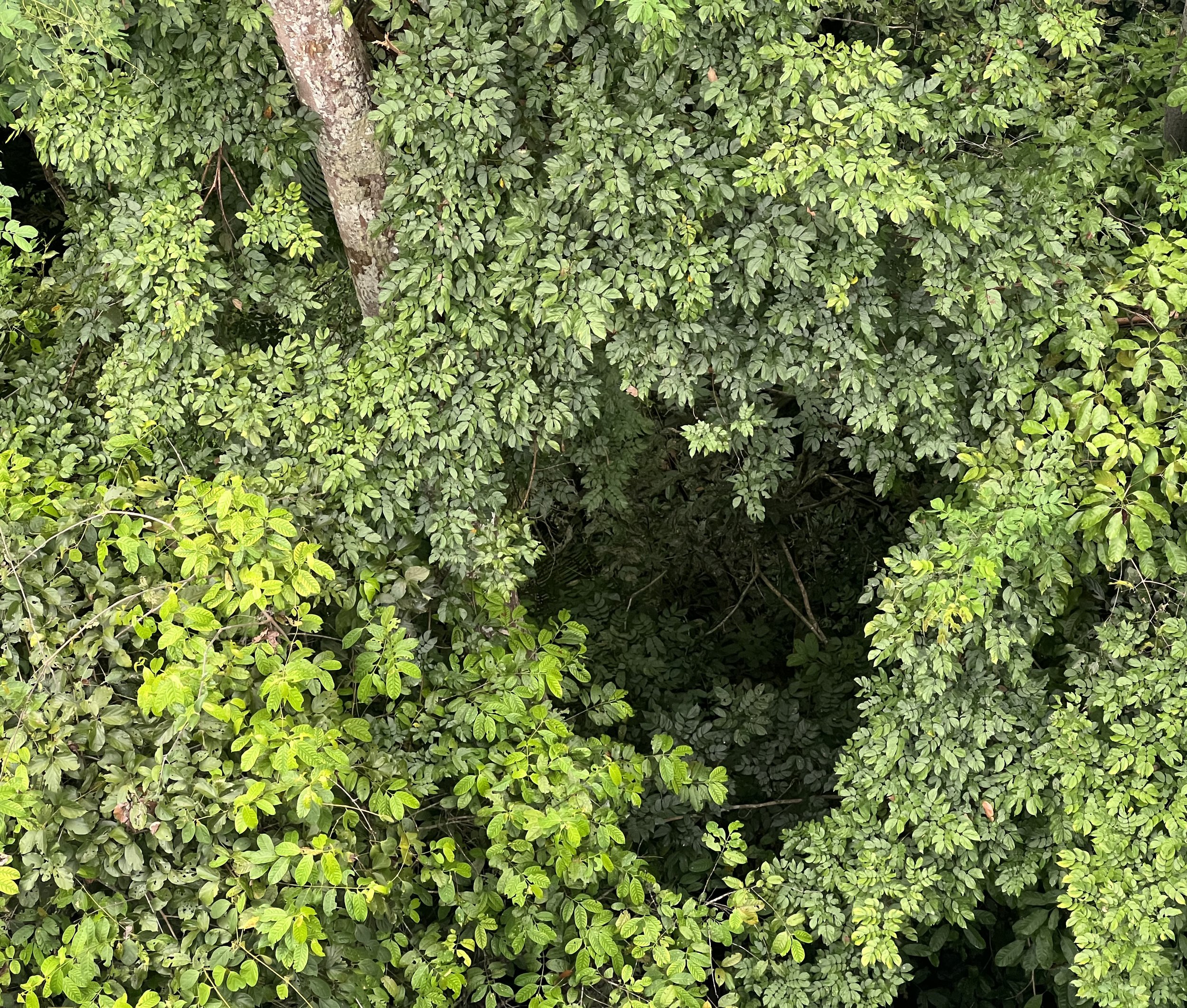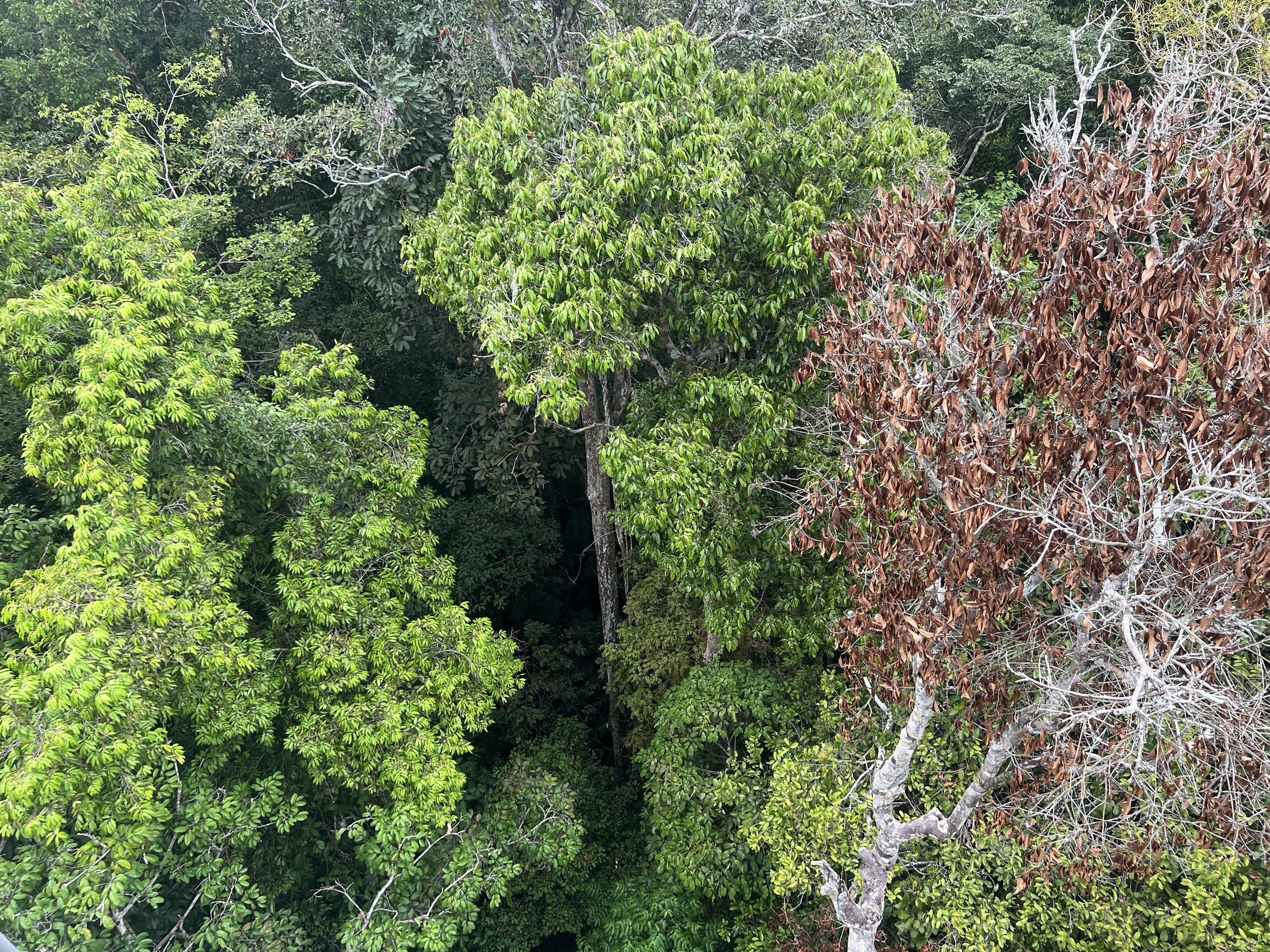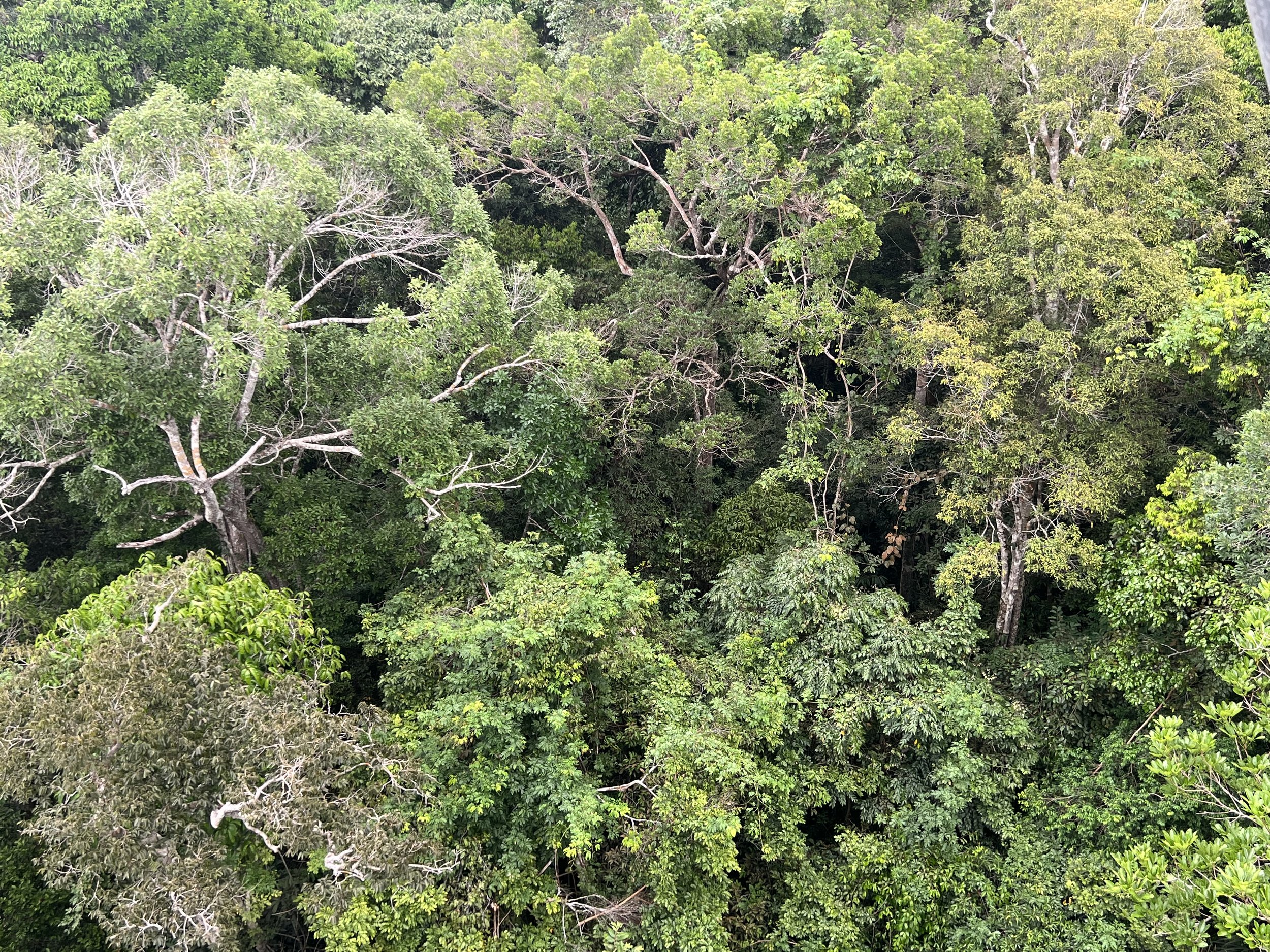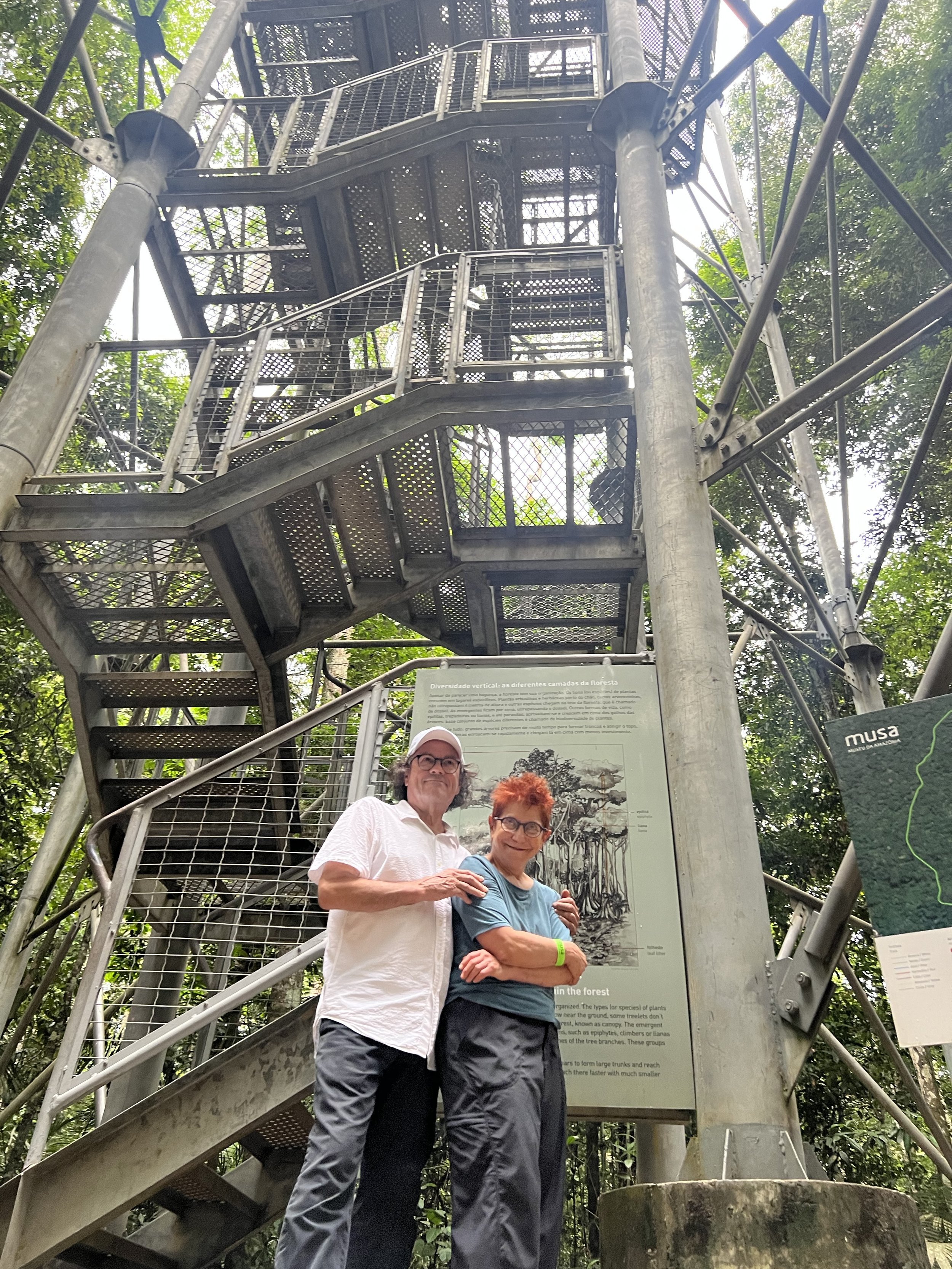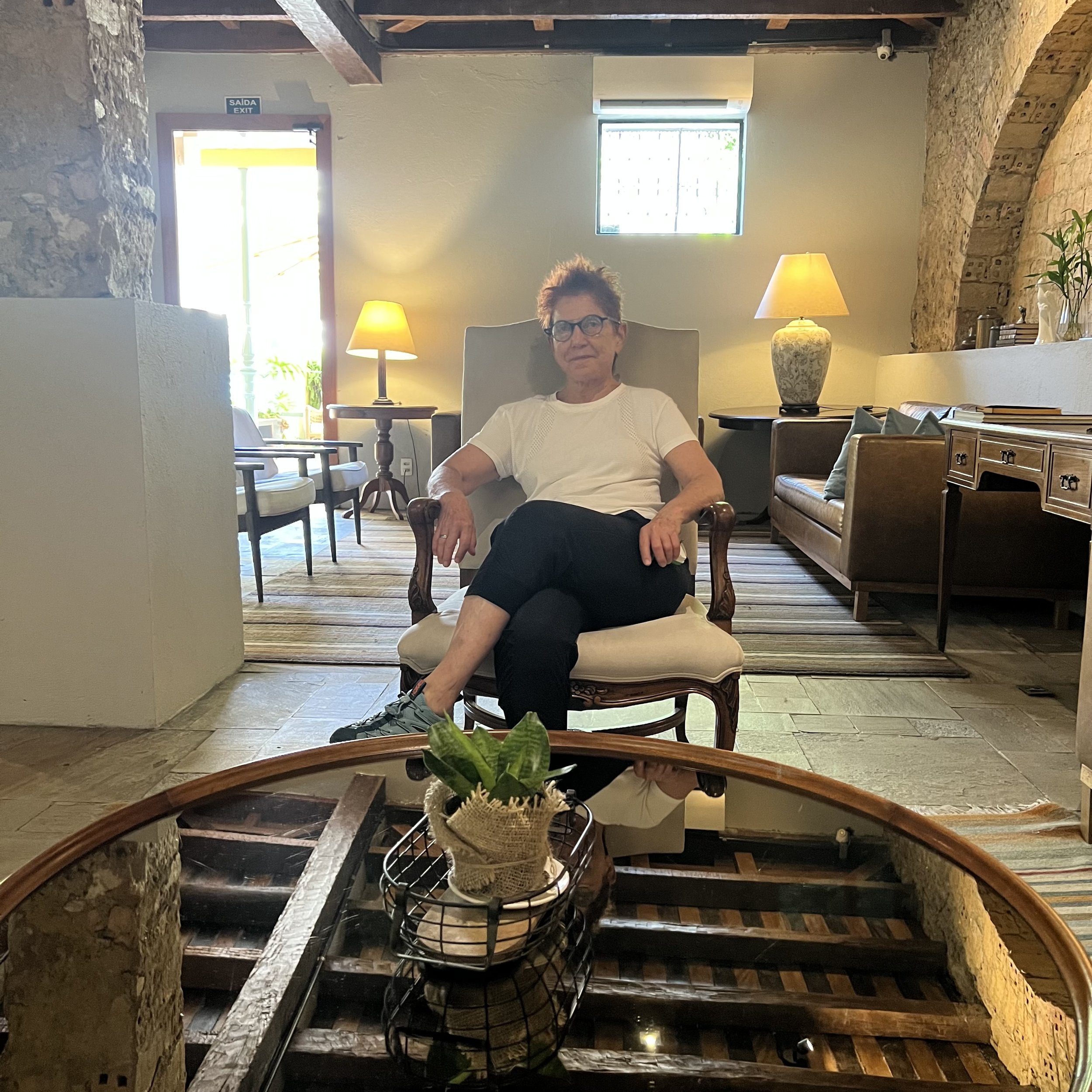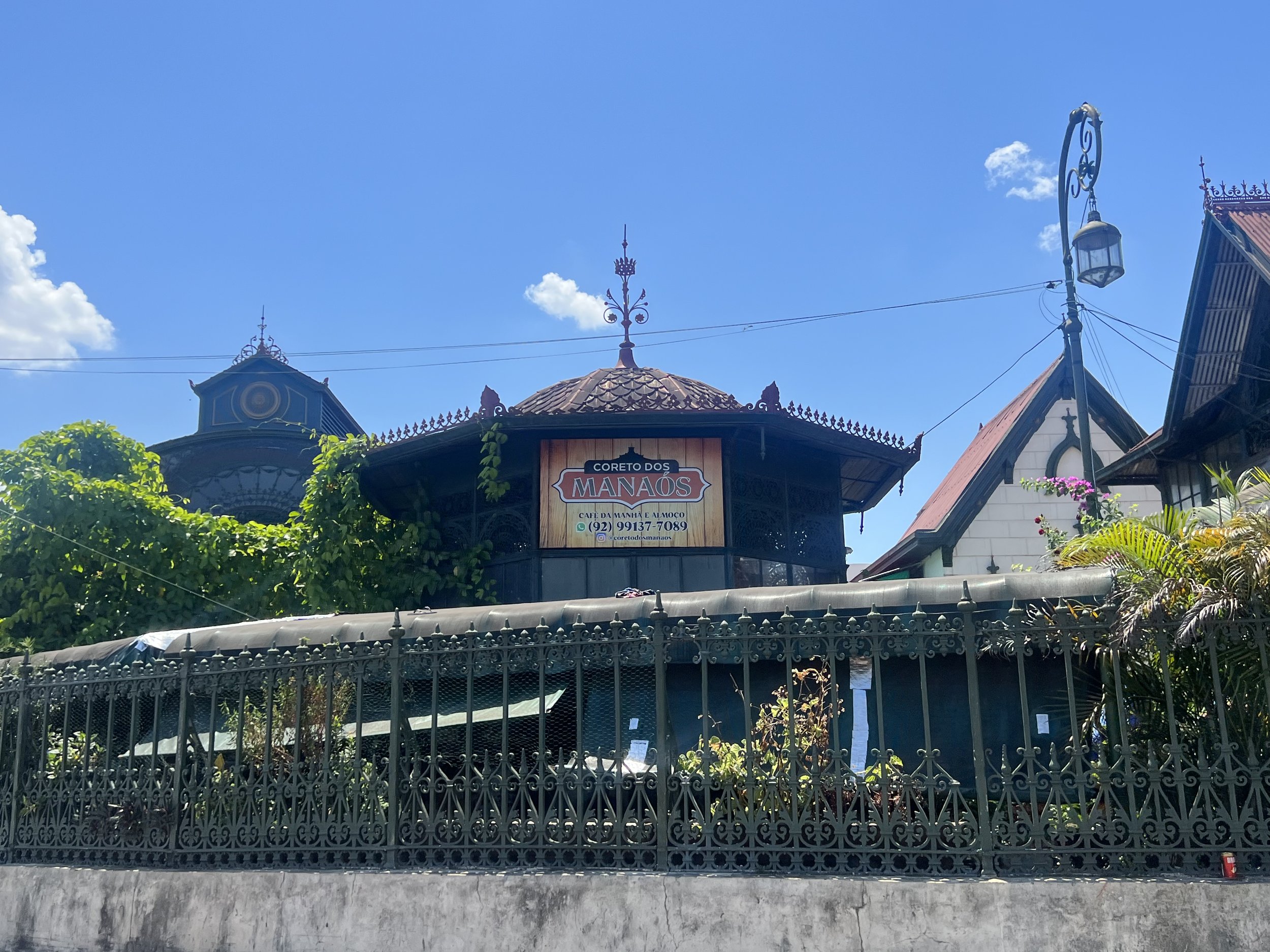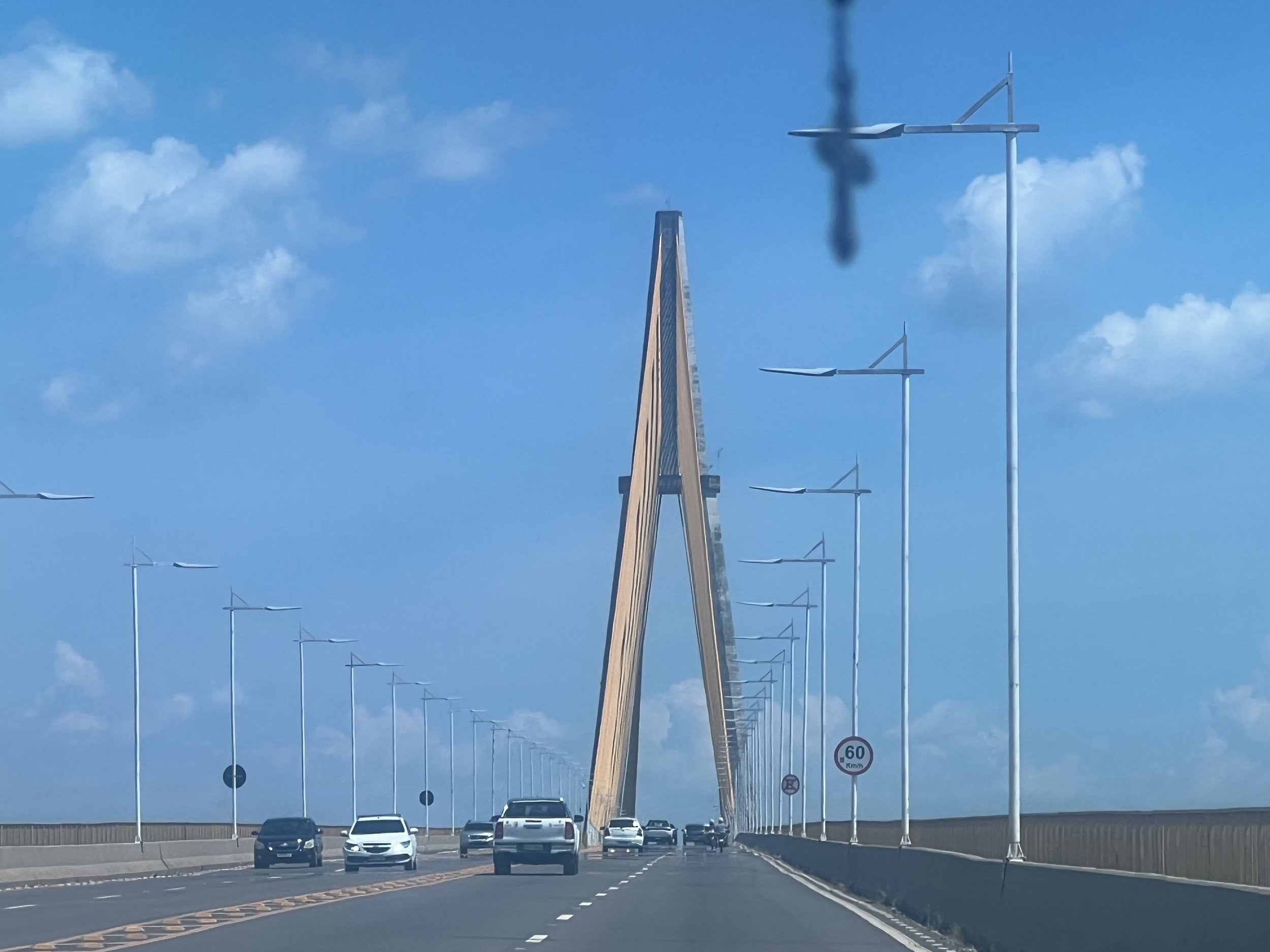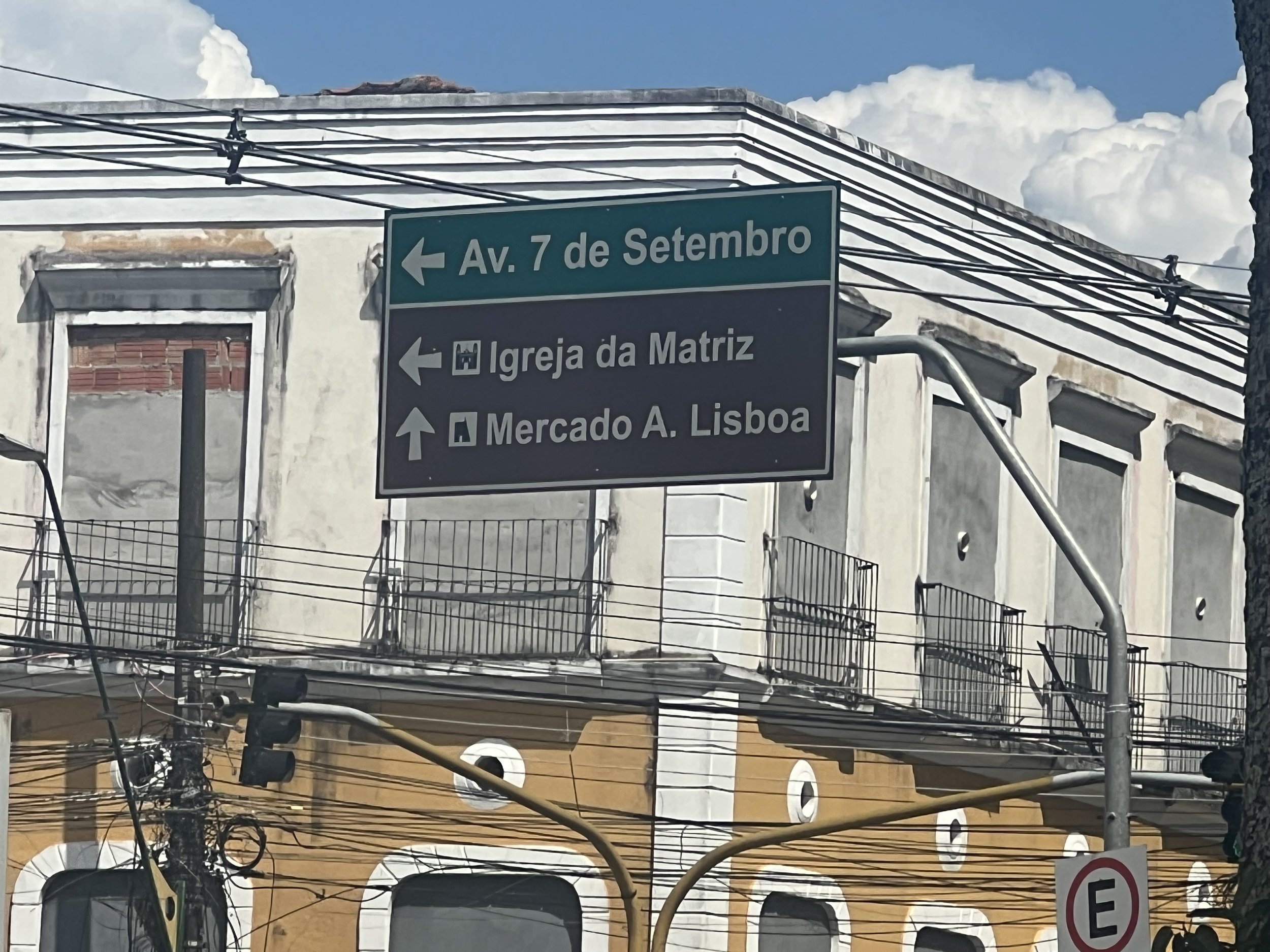He seemed about my age, was from the northeast US, and explained how he left home in the 60s to travel the world and wound up as a naturalist in the Amazon, where he has remained ever since. The main point of his talk was to disabuse us of the notion that the Amazon Rainforest is some sort of “ideal” untouched environment. The assumption that the forest was a “natural” biome and not anthropogenic is based on ignorance, according to Charles. The assumption was born out of western academia, which was (and is) full of colonial thinkers. Charles posited that human activity was always there, and those first inhabitants understood the danger of the forest and how to negotiate it. He spoke of niche construction, which Darwin did not consider to be important. All species construct their niche, which fortifies them against change. Think of ants, beavers, birds. Charles then gave us a very brief history of the evolutionary processes that pivoted 800,000 years ago when Homo Erectus first domesticated the environment with fire—the first tool not held in one’s hand. Researchers were able to detect human presence in Australia 50,000 years ago based on a great increase in relics of fire. So humans transformed a natural ecosystem into an anthropogenic one. Researchers have dated evidence of human domestication of plants and animals at around 15,000 years ago. Charles brought our attention to a few terms: “culture” means taking care; “horticulture” means taking care of gardens; “agriculture” means taking care of the fields.
As human populations began to care specifically for certain plants, they shaped the ecologies around them. People would favor a tree, for instance, that bore sweet fruit. Not planting yet, but harvesting as they walked along, and throwing the seeds and pits away to cultivate more of what they liked. Charles described how foods became domesticated in the Amazon, and how the roots, or tubers, were the most important cultivars. Alongside the abundance of fish that filled the region’s rivers, tubers provided robust protein sources. The Amazonian population sustained itself through the consumption of the root “manioc.” Charles said that one kilo of manioc is equal to 500 kilos of steer in protein content. He gave us this image: 60 million cattle surround us in the Amazon, without the environmental damage of livestock production.
Despite the poor soil, local people created black dirt by combining dung heaps, mittens, wastes, and charcoal. Researchers have discovered charcoal in this area dating back 7,000 years, indicating that people have been building fires and nurturing the soil for a very long time.
Charles described how trees and palms were denser along the small rivers, where there was much domesticated activity. In 1541 when the Spanish and Portuguese conquistadors arrived to the region that would later be called Amazonas, there were already small cities established along the riverbanks, with orchards and cultivated produce visible in abundance. And of course, the conquerors went through the rivers grabbing food wherever they could. The European conquest was in Charles’ words clearly a genocide. When Pizarro arrived in 1540, there was no smallpox epidemic. It was in 1616 with Belem that “the shit hit the fan” for the indigenous people. Missionaries brought great disease, and the population collapsed. By the time of the rubber boom, there were less than 11,000 indigenous people in the Amazon.
Charles questioned whether it’s possible to come to a balance between human desires and nature. He is not optimistic about the European/American ontological model. The problem, he feels, is that we are all living beyond our means. He recommended the book The Dawn of Everything, which speaks about global scarcity where we humans function like slaves.
Needless to say, this whole talk was a bit of a downer, yet we didn’t accept everything he said. As a group, I think we remain hopeful.
